

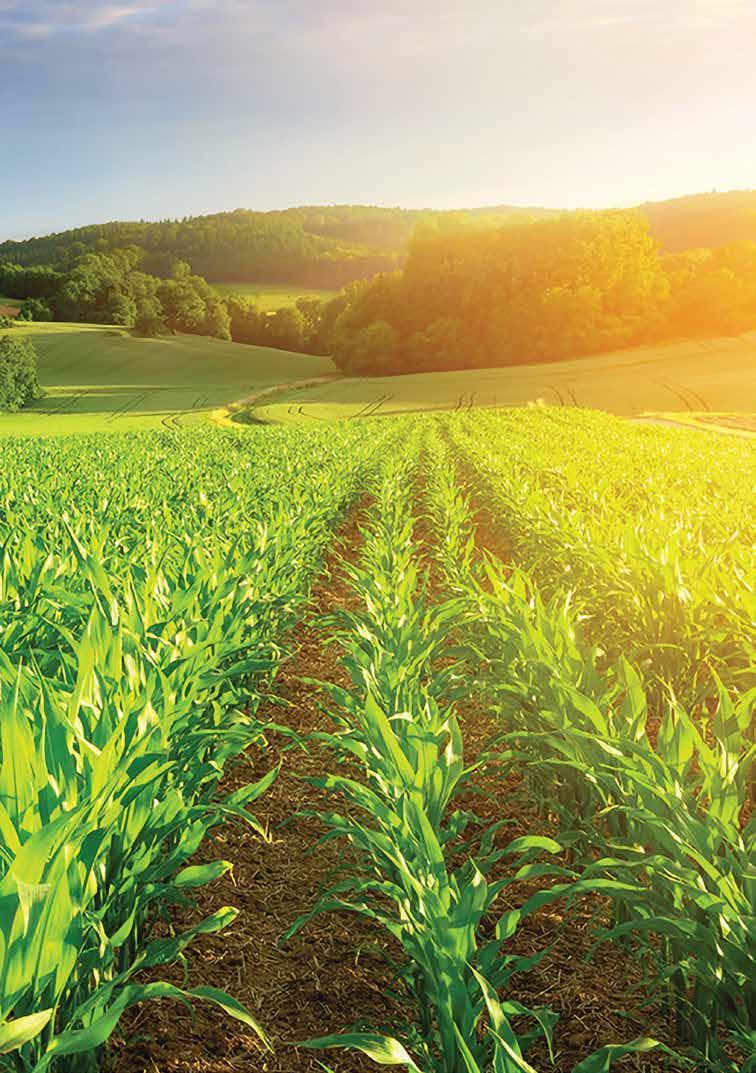




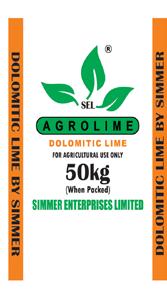



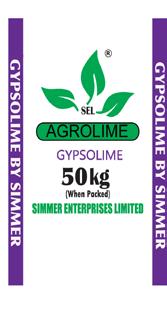

SIMMER ENTERPRISES LIMITED Manufacturers of Agriculture Lime, (Calcitic Lime & Dolomitic Lime) Calcium Carbonate, Stockfeed Lime & Grit Suppliers of Agro Inputs, Gypsum (Calcium Sulfate) & all types of fertilizers +260 974 573 758 agrolime.zambia@gmail.com +260 978 592 390 agrolime.simmer@gmail.com +260 211 286 424 www.simmerlime.com P.O. BOX 33201, STAND No.12609, KATANGA ROAD, CHINIKA INDUSTRIAL AREA, LUSAKA - 10101 ZAMBIA
Executive Editor
Anthony Kiganda editor@farmersreviewafrica.com sub Editor
Anita Anyango
Contributing writers

Lawrence Paganga Zimbabwe Nqobile Bhebhe Zimbabwe
Oscar Nkala Botswana Bertha M South Africa Jane Marsh Environment.co Project Manager
Victor Ndlovu sales@farmersreviewafrica.com Art Director & Layout Augustine Ombwa austin@arobia.co.ke
Correspondents
Isabel Banda zambia@farmersreviewafrica.com Mutale K. Pikes’ mutaleketanipikes@gmail.com +260 761730213 sales & Marketing Gladmore. N gladmoren@farmersreviewafrica.com Mandla M. mandlam@farmersreviewafrica.com Kholwani. D kholwanid@farmersreviewafrica.com Polite Mkhize politem@farmersreviewafrica.com leslien@farmersreviewafrica.com
East African Liaison
Arobia Creative Consultancy Tel: +254 772 187334, arobia@farmersreviewafrica.com
Published by :
Mailing Times Media +27 11 044 8986 sales@farmersreviewafrica.com

CONTENTS
FEATURE
Farmers embrace smart insurance to guard against climate shocks

What about Simeza: New trend on all industrial fronts


Volume 10. Issue 6. Nov/Dec 2022
Editor’s Note


Yes, Africa can eradicate hunger


Recent reports are disturbing. Over 278 million people in Africa suffer from chronic hunger. This corresponds to 20 percent of the continent’s population. By comparison, ten percent are affected when looked at globally.
However, it is possible to eradicate hunger on the continent in the near future. Global Agriculture leaders are optimistic that we can end hunger in Africa by 2030. But first there is need to mobilize political support for the structural transformation of agriculture in Africa.
It is inexcusable that a continent with 65% of the world’s most arable land and abundant water resources, would still suffer from food insecurity. Yet Africa has the benefit of technologies, platforms, and resources to change the status quo by energizing the private sector, scaling up food production for millions of African farmers, unlocking finance for farmers and agricultural SMEs, and transforming the agriculture and food value chains.
The continent would also need to think about how to finance agriculture SMEs and smallholder farmers and how to increase productivity. Seeds, storage, electricity, transport logistics and infrastructure also play a major role in the whole agriculture value chain.
Finally, collaboration with agriculture stakeholders for example financiers, researchers, NGOs, is crucial if we are to meet the 2030 zero hunger target.
A merry Chrismas and a happy new year!
Enjoy the read!
Mailing Times Media (Pty) Ltd makes every effort to ensure the accuracy of the contents of its publications, but no warranty is made as to such accuracy and no responsibility will be borne by the publisher for the consequences of actions based on information so published. Further, opinions expr essed are not necessarily shared by Mailing Times Media (Pty) Ltd
FARMERS REVIEW AFRICA
www.farmersreviewafrica.com
Anthony Kiganda
FARMERS REVIEW AFRICA Volume 10. Issue Nov/Dec 2022 www.farmersreviewafrica.com
36
Bobcat Sharpens Claws with Impressive SIMA 2022 Display Bill & Melinda Gates Foundation pledges US $7bn to support Agriculture, Health in Africa How To Optimize Weekly Maintenance Schedules On Agricultural Equipment 16 07 23 30 TO ADVERTISE IN FARMERS REVIEW AFRICA CALL: +27 11 044 8986 | Email: sales@farmersreviewafrica.com Advertiser’s index The publication of this magazine is made possible in part from fees paid by our advertisers. To help our advertisers evaluate the effectiveness of informing you of their company, products and services, and to help us retain our advertisers, tell them that you are contacting them because you saw their advert in the Farmers Review Africa Agritech.........................................................................05 Agro Expo...................................................................IBC Baudouin...................................................................OBC Bearing International....................................................17 Big Dutchman...............................................................15 BioFischency................................................................02 CHC Nav.......................................................................35 Frigotec.........................................................................21 Irrigation Association....................................................41 Marketing Arm..............................................................44 SIMEZA........................................................................37 Simmer Enterprises...................................................IFC TOMRA.........................................................................43 Wearcheck ...................................................................27 Wood Mizer...................................................................33






Brazil, Egypt, Lesotho agencies awarded for promoting sustainable investment in agriculture

of making Egypt become a self-reliant country on sugar production.
UNCTAD awarded Brazilian Trade and Investment Promotion Agency for their innovation. The agency partenerd with Israel Trade and Investment, the Japan External Trade Organization and Enterprise Singapore and launched a program dubbed ScaleUp designed to attract international tech companies including agritech start-ups that help with innovative technological tools and systems to optimize agricultural production, rapidly detect plagues and diseases and contribute to climate-resilient agriculture.
Investment promotion agencies (IPAs) from Brazil, Egypt and Lesotho have been awarded for excellence in promoting sustainable investment in agriculture, contributing to food security and development.
The award ceremony took place during the 13th session of the Investment, Enterprise and Development Commission in Geneva
and UNCTAD presented the awards. Egypt’s General Authority for Investment and Free Zones was awarded for facilitating the Canal Sugar Company, a project which is part of Egypt’s 2030 sustainable development vision to achieve food security while adapting to climate change using smart agriculture systems. The Canal Sugar Company project targets to train local farmers on minimal use of water and fertilizers with a goal
Maluti Fresh Market Produce facility, attracted UNCTAD’s attention awarding Lesotho National Development Corporation. The agency launched the initiative with a goal of empowering local registered farmers by facilitating their access to markets and finance, thereby supporting them to transition from subsistence to commercial farming. The market has promoted investment by smallholder farmers in the production of local fruits and vegetables, reducing reliance on imported goods while providing better nutrition to Lesotho schools.
Nigeria launches NAITS for livestock industry

Nigeria has launched the National Animal Identification System and Traceability System, NAITS for livestock industry. Minister of Agriculture and Rural Development, Dr Mohammad Abubakar performed the launch ceremony and said the system aims address challenges faced in the sector including cattle rustling. The system tech is part of the National Livestock Transformation Plan, NLTP, meant to foster greater prosperity through reforms that will make the livestock sector “more productive and sustainable” at the same time that it encourages peaceful coexistence between herders and farmers.
The tech system will have proper identification of cattle and non-ruminants, easy traceability, provision of credit, insurance, and others. It is set to be implemented in all 36 States. Stakeholder engagements and sensitization on NAITS have already commenced in Bauchi, Edo, Enugu, Lagos, Katsina, Niger, Ogun, Oyo, Ondo and FCT. “The Federal Ministry of Agriculture and
Rural Development under the National Livestock Transformation Plan, NLTP, initiated the National Animal Identification System and Traceability System, NAITS, project as one of the strategies to address the socio-economic and security challenges bedevilling the livestock sector and dearth of data for proper planning among others.
“The Ministry has been collaborating and will continue to collaborate with a wide range of stakeholders to ensure that the National Animal Identification and Traceability System for Nigeria is internationally recognised, efficient and effective to address the livestock data needs of the country. The successful implementation of NAITS will support livestock owners to identify their animals, curb livestock rustling, facilitate interventions in the livestock sector, provision of credit and insurance, livestock movement control, animal recording for genetic improvement and research, ease of traceability, surveillance, animal disease control and enable trade among others.
“As you are all aware, technology advancements have rapidly enhanced productivity across all sectors of our economy. The progress made so far to actualise Animal Identification and Traceability in Nigeria as well as other innovations in Agriculture have been largely driven by digital transformation which has produced exponential results. Am therefore particularly pleased that the launching of the National Animal Identification and Traceability System (NAITS) to enhance the activities of our domestic livestock sector is taking place at this time.
“The National Animal Identification and Traceability System (NAITS) is a comprehensive animal information management system that will utilize forgery-proof ear tags and cattle passports combined with digital technology to identify and track livestock across Nigeria. This system complies with the global standards stipulated by the International Committee for Animal Recording, ICAR,” said Dr Mohammad Abubakar.
NEWS 4 | November -December 2022
Kajiado County receives ASDSP II program support

Farmers in Kajiado County in Kenya have received a boost from the Agriculture Sector Development Support Programme Phase Two (ASDSP II). ASDSP II) is one of the key programmes designed by the Ministry of Agriculture, Livestock, Fisheries and Cooperatives and 47 county governments to contribute to addressing food and nutrition security and promote manufacturing.
It is primarily designed to enhance the capacity of different Priority Value Chain Actors at different levels to tackle the problems that hinder commercialization of Agriculture. The programme is implemented by the Government of Kenya (National and 47 county governments) with strong participation of the private sector as direct

beneficiaries or service providers. It is financed by the Government of Kenya, Sida and EU for a period of five years (2017-2022). Farmers in the county received a number of innovative equipment to boost their yields. They include;
Construction of Membe Dam project in Tanzania on track
Works on the Membe Dam project in Tanzania is progressing well. Country’s Deputy Minister of Agriculture, Anthony Mavunde expressed satisfaction during an inspection at the site.
The dam project located in Chamwino District, Dodoma Region, aims to boost agricultural sector in the country. It is part of the government 2022/2023 financial year plans which includes construction of 14 dams across the country, with a total capacity to store 12 billion litres of water.

Upon completion, the dam’s major task will be for irrigation. Infrastructure will also be installed to support the watering of livestock and to supply water to the surrounding villages.
“This dam will enable citizens to make farming and grazing activities easier, thus transforming their economic and social lives. The government led by President Samia Suluhu Hassan has increased the budget for the Ministry of Agriculture, where a big chunk has been channeled towards irrigation project. The objective is to ensure we have
motorized spray pumps and solar-powered water pumps while the beef farmers benefitted from a grass planter chisel plough and grass mower, for tomato farmers. Beef and dairy farmers received a 1,000 litres/hour homogenizer and a 1,000 liters/hour pasteurizer which form part of their mini dairy.



Kajiado, Kajiado Deputy Governor Martin Moshisho noted that the innovative equipment is a great relief and will support the food security agenda even in the midst of climate change.
“Courtesy of this programme, we will have mini dairies that will support our women. For the past few years, the Kajiado County economy has been receiving about Sh100 million every month from the dairy sector. Through this we are going to improve production and value addition of the milk. Thanks to ASDSP famers will also add value to their tomatoes and sell them at better prices,” said Moshisho.
reliable sources of water and enable farmers to conduct their farming activities throughout a year,” Mr Mavunde said.
Budget allocation for the agricultural sector has increased to a whopping 954bn/- for the financial year 2022/2023 up from 294bn/- which was allocated during the previous fiscal year. Budget allocation for irrigation has been increased from 57bn/- in the financial year 2021/2022 to 416bn/in the current fiscal year.
“Many irrigation projects have had great challenges and are causing us (the Ministry of Agriculture) problems because they have not observed standards, so I am asking whoever is responsible for this project to ensure that quality becomes a priority,” Mavunde emphasised.
NEWS November -December 2022 | 5
Kenya to import GMO maize

The government of Kenya has announced plans to import genetically modified maize as part of its move to ease food shortages caused by the country’s worst drought in 40 years. Trade and Industry Cabinet Secretary Moses Kuria made the announcement and said through a gazette notice the government intends to allow
in maize to make Kenya food secure. The imports will be the first since President William Ruto lifted a decade-long ban last month on the cultivation and importation of genetically modified crops, which authorities hope will improve crop yields and food security as millions face hunger. Dr Ruto said the government had considered expert
opinion from scientists over the suitability and safety of GMOs before lifting the ban.

The government is targeting to import 10million bags of maize and it will be duty-free importation over the next six months. Importers will be at liberty to ship in either GMO or non-GMO maize. Agricultural organizations have projected that maize harvest this season could drastically be low due to high fertilizer prices early this year that negatively affected the acreage under the maize crop as well as high consumption of green maize from this year’s crop. Annual rains have failed across Kenya, Ethiopia and Somalia for the last four seasons, forcing 1.5 million people out of their homes in search of water and food elsewhere.
“In view of the food situation in the country, I shall be signing instruments to allow duty free imports of GMO (genetically modified) and non GMO Maize for the next 6 months,” said CS Moses Kuria.
South Africa, Sudan, Malawi, Nigeria, Eswatini, Kenya, Ethiopia and Ghana are populary known to cultivate GMO crops for commercial purposes.
FAO urges Uganda on public investment in agriculture
Uganda is being advised to seek public investment on agriculture. The United Nations Food and Agriculture Organization (FAO) urged the country and said this will help them spur economic recovery over RussiaUkraine conflict and COVID-19 effects.

FAO points that Uganda majorly need investment in irrigation systems, and storage and revamp of rural roads to boost production and capital accumulation. They further the government to look into priority crops and where they can be grown to harvest the most.
Agriculture remains the major source of livelihood in Uganda. Uganda’s main food crops have been plantains, cassava, sweet potatoes, millet, sorghum, corn, beans, and groundnuts. Major cash crops have been coffee, cotton, tea, cocoa, vanilla and tobacco, although in the 1980s many farmers sold food crops to meet short-term expenses. The production of cotton, tea, and tobacco virtually collapsed during the late 1970s and early 1980s.
The sector contributes about 24% percent of the gross domestic product and employs more than 64 percent of the working population in Uganda. Uganda’s agricultural sector presents multiple highly-profitable investment opportunities both for profit-oriented investments and partnerships. As one of the 55 member states of the African
Union, the country has steadily picked the pace in agricultural development and was highlighted as one of the 20 leading countries in delivery on development targets of the Comprehensive Africa Agriculture Development Programme (CAADP).
NEWS 6 | November -December 2022
Bill & Melinda Gates Foundation pledges US $7bn to support Agriculture, Health in Africa
Nigeria, Africa’s most-populous nation, is likely to get most of the spending in the region, Bill Gates said at a briefing in Nairobi. He didn’t disclose other details. In Kenya, the Seattlebased foundation supports projects in agriculture, health, immunization, nutrition, sanitation, financial services and gender equality among others.

Guided by the belief that every life has equal value, the Bill & Melinda Gates Foundation works to help all people lead healthy, productive lives. In developing countries, it focuses on improving people’s health and giving them the chance to lift themselves out of hunger and extreme poverty.
The Bill & Melinda Gates Foundation has pledged US $7 billion to Africa’s agriculture and health sector. Bill Gates, co-chair of the foundation affirmed the foundation’s long-term commitment to Africa and said the pledge will run over the next four years on grants to help address hunger, disease, gender inequality and poverty.
This new commitment to support African countries is in addition to existing Gates Foundation funding
to multilateral organizations, including Gavi, the Vaccine Alliance and the Global Fund to Fight AIDS, Tuberculosis and Malaria.
The foundation is majorly focusing on five countries where it believes it can have the greatest impact on improved trajectories toward achieving sustainable development goals SDGs. The countries include Burkina Faso, Ethiopia, Kenya, Nigeria and South Africa.
Seychelles, ISA partner for solarpowered cold storage project

In the United States, it seeks to ensure that all people—especially those with the fewest resources—have access to the opportunities they need to succeed in school and life. Based in Seattle, Washington, the foundation is led by CEO Mark Suzman, under the direction of Cochairs Bill Gates and Melinda French Gates and the board of trustees.
the country’s commitment to fighting climate change. He placed emphasis on the need to work closely with partners like ISA in order to accelerate the deployment of renewable energy.
The International Solar Alliance, an intergovernmental organisation, has been helping 110 member countries to scale up solar and make it a preferred source of energy. The ISA is guided by its ‘Towards 1000’ strategy which aims to mobilise USD 1,000 billion of investments in solar energy solutions by 2030, while delivering energy access to 1,000 million people using clean energy solutions and resulting in installation of 1,000 GW of solar energy capacity.
The government of Seychelles has announced a partnership with International Solar Alliance (ISA) for development of a solar-powered cold storage. Minister of Agriculture, Climate Change and Environment, Flavien Joubert confirmed the partnership and said the project is part of the ministry’s plan to address the many challenges facing the agriculture sector in Seychelles and will also
provide training and job opportunities to the inhabitants. The facility will be developed on La Digue Island. It will be 5 metric tonnes of cold storage capacity which will increase the shelf life of fruits and vegetables, reduce food wastage and increase income levels.
In addition, Jouberthighlighted the various initiatives Seychelles is undertaking in line with

This would help mitigate global solar emissions to the tune of 1,000 million tonnes of CO2 every year. For meeting these goals, the ISA takes a programmatic approach. Currently, the ISA has 9 comprehensive programmes, each focusing on a distinct application that could help scale deployment of solar energy solutions.
Activities under the programmes focuses on 4 priority areas – Analytics & Advocacy, Capacity Building, Programmatic Support, and readiness and enabling activities, that help create a favourable environment for solar energy investments to take root in the country.
NEWS November -December 2022 | 7
Agri Resources Group, UNDP, ADD-OI partner to develop a sustainable vanilla supply chain
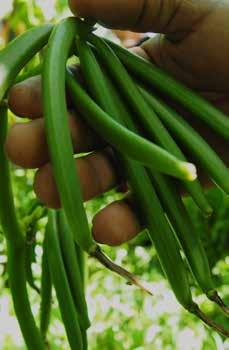

Agri Resources (Mauritius), ADD-OI, and the United Nations Development Programmes have partnered to develop a sustainable vanilla supply chain.
An MoU was inked between the partners and involves projects aiming to contribute to the environmentally sustainable management of living natural resources and land use, as well as the socioeconomic advancement and empowerment of farmer communities on the islands.
The partnership will see development of projects for sustainable agriculture, land restoration, agroforestry, and preservation of biodiversity, additionally boosting economy while also form job opportunities and training for the local communities. The projects will be deployed in Madagascar and Mauritius in 2023.
These long-term projects have the ability to create direct profitability and benefit from the Agri Resources Group’s experience in performing
these activities. Agri Resources Group S.A. is an international business, headquartered in Luxembourg which focuses on the cultivation of essential products ranging from importsubstitution crops to vanilla, spices and niche products.
The group has been developing in the Indian Ocean since 2015, and today manages 3 plantations total of 145ha, two processing and export facilities, an Essential Oils distillery, and works with a network of over 1700 smallholder farmers.
“We are very grateful and humbled by the overwhelmingly positive response towards our projects. Joining forces with ADD-OI and UNDP, as well as the financial and development institution who are willing to follow us is an opportunity to amplify the impact of our operations on the environment as well as the communities we serve,” said Shalina Dhallapah, Director of Agri Resources (Mauritius).
Zimbabwe draws 10-year strategy for tilapia farming

The 10-year strategy involves boosting farmed Nile tilapia production from 5,600 to 14,000 tonnes per year throughout the ten year period. As a result yearly benefits would be raised from $5.6 million now to $22 million in ten years’ time, while also having an increase in services and markets for small-scale fish farmers. The strategy will also take into consideration best practices reduce negative effects on biodiversity and ecosystems.
“Tilapia farming can be a driver of our countries’ inclusive growth. This agreement will help our tilapia aquaculture take off and can be instrumental to reduce poverty and improve food security,” said the Honourable J Masuka, Minister of Lands, Agriculture, Fisheries, Water and Rural Development at an event celebrating sector-wide commitment to a ten-year plan for the future of Zimbabwe’s tilapia sector.
A10-year strategy has been finalized by Stakeholders and food security experts from across Zimbabwe for tilapia farming. The strategy aims to boost the country’s tilapia value chain and promote opportunities for women, youth and marginalised groups without adding pressure on the environment. It being
spearheaded by FISH4ACP, a global fish value chain development initiative of the Organisation of African, Caribbean and Pacific States (OACPS), implemented by FAO with funding from the European Union (EU) and the German Federal Ministry for Economic Cooperation and Development (BMZ).
“FAO is happy to contribute to Zimbabwe’s efforts to expand aquaculture production. FISH4ACP demonstrates how we can fulfil our mandate to transform aquatic food systems into drivers of employment, economic growth, social development and environmental recovery,” Patrice Talla, FAO’s sub-regional coordinator for Southern Africa.
NEWS 8 | November -December 2022
Nestlé partners with Africa Food Prize to strengthen food security and climate change resilience

Nestlé announced is partnering with the Africa Food Prize to help accelerate the transformation of food systems in Africa, as a way of strengthening the continent’s food security and building greater climate change resilience.
The Africa Food Prize awards USD 100,000 to individuals and institutions that are pioneering agricultural and food systems transformation in Africa. The Prize puts a spotlight on uniquely impactful agri-food initiatives and technological innovations that can be replicated across the continent to increase food security, spur economic growth and development, and eliminate hunger and poverty in Africa. The Africa Food Prize is hosted by AGRA, an African-led and Africabased institution that puts smallholder farmers at the center of the continent’s growing economy by transforming agriculture from a solitary struggle to survive into farming as a business that thrives. AGRA is headquartered in Kenya and works in 15 African countries.
This year, Dr. Eric Yirenkyi Danquah, a plant geneticist from Ghana, was awarded the prestigious prize during September’s AGRF Summit in Kigali, Rwanda. Dr. Danquah was celebrated for his outstanding expertise and leadership in establishing the West Africa Centre for Crop Improvement (WACCI) and developing it into a world-class center for the education of plant breeders in Africa.
Nestlé will contribute CHF 100,000 to the Africa Food Prize, which will be awarded in 2023. Part of the contribution will go to the main award and
part to a special category focusing on innovations that advance regenerative food systems.
Remy Ejel, Chief Executive Officer of Zone Asia, Oceania and Africa, Nestlé S.A. said, “Transforming agriculture to be more productive and sustainable is key to reducing hunger and improving livelihoods for the long term. We aim to support and amplify efforts that spearhead regenerative agriculture and food systems to enable better productivity, better nutrition and better incomes for people in Africa.”
Commenting on the partnership, Dr Agnes Kalibata, President of AGRA said, “We are happy to be partnering with Nestlé to recognize Africa’s best in food systems. The Africa Food Prize is a great opportunity to shine a bright spotlight on
New brewer to engage 3 000 Zimbabwe sorghum farmers
Anew traditional beer brewing company, Buffalo Brewing Company is set to engage 3 000 sorghum farmers in Zimbabwe to grow the crop for brewing on 750ha of land. Buffalo Brewing Company is a subsidiary of Innscor Africa Holdings, a Zimbabwe Stock Exchange listed group.
The brewing company’s managing director; Richard Mann confirmed that 3 000 sorghum farmers were set to benefit from the project as the new-kid-on-the-block braces for competition with traditional brewers such as Delta Beverages. “We will get half of our requirements from 750ha under contract farming at market with the rest
being sourced from the free market at harvest time,” he said.
“We have contracted just a few farmers, but the target is to increase our contracted crop and build the supply from the small-scale market in the coming season. The support package will include seed accompanied by the much-needed agronomic backing.
Sorghum is an ancient grain and pro-planet protein source that’s packed full of nutrients, and it can be grown as a grain, forage or sweet crop. Sorghum is one of the top five cereal crops in the world. Innscor Africa invested close to US$70

Africa’s outstanding minds, giving the rest of us a chance to learn and replicate their good work that is moving us closer to sustainable, inclusive and resilient food systems and achieving the United Nations Sustainable Development Goals 2 on Zero Hunger.”
Nestlé’s partnership with the Africa Food Prize builds on its years-long work in Africa to improve the continent’s nutrition and agriculture. The company has taken great strides to expand access to affordable nutrition in many communities, for example, by fortifying Maggi bouillon cubes with iron in Central and West Africa. It is also pioneering regenerative dairy farming with the establishment of the first net zero dairy farm in Skimmelkrans, South Africa.
In early 2022, Nestlé launched an innovative income accelerator program, aimed at addressing child labor risks and closing the living income gap for cocoa-farming communities in Côte d’Ivoire and Ghana. Recently, Nestlé announced an investment of CHF 1 billion by 2030 under the Nescafé Plan to transition to sustainable coffee farming, including in Côte d’Ivoire.
Entries in the Africa Food Prize are evaluated by a judging committee comprising some of Africa’s greatest food system leaders. Winners are selected based on proven results and scalable efforts.
Submissions for next year’s Africa Food Prize will be open from January 2023 and winners will be announced at the AGRF, Africa Food Systems Forum, in September.
million into a beer manufacturing plant under its Buffalo Brewing Company with more funds expected to be injected into the alcohol unit in the near future.
The group is Zimbabwe’s largest food processor, with profitable interests in maize-meal, fast-foods and beverages.

NEWS November -December 2022 | 9
Photo Credit” ICRISAT
Cassava disease haunts Zambia
Thousands of Zambians in Luapula province in northern Zambia are threatened with hunger after a brown streak and another mysterious disease hit more than 20,000 hectares of cassava-their staple.
soil is adaptable. Kabaso Kapampi, a lawmaker from Mwansabombwe in north eastern Zambia laments the increased damage to the crop because of the termite which has threatened the lives of the local people with a call for authorities in disaster and agriculture to resolve the matter and avert hunger.
“It’s a disaster, we literally have no food, my people have been left with no food because the termites have forced all the tubers to rot which is the actual reason it is grown,” he says, while praying for appeal.
“We have basically asked the Government to declare this problem a disaster because people in the area have no food, it has been eaten by the termite, and we are talking about over 15,000 hectares of land which has no cassava to fall back to,” he told FRA in an interview.
Nchelenge, Mwansabombwe, Kawambwa are among other cassava producing areas that are grossly affected by the Brown Streak and a mysterious termite that is forcing the tuber to rot forcing the farmers to fail to harvest, a threat to food security in the area.
Findings by lawmakers and Zambia Agriculture Research Institute confirm that multitudes of

hectare land have been affected in more than six districts of the country that grow cassava for consumption and commercial-including being an ingredient for clear Beer-Eagle-a brand by Northern Breweries-a unit of Zambia Breweries. The brand launched three years ago has attracted business to brewers who have bolstered its production in excess of 20,000 tons from various farmers in Luapula and other areas where the
Zimbabwe draws 10-year strategy for tilapia farming

ZARI, in its research, has established that various tubers in Luapula province have been affected by the disease.

Recently Brown Streak was reported to have affected some farmers that rely on selling the crop commercially and for household food security.
The 10-year strategy involves boosting farmed Nile tilapia production from 5,600 to 14,000 tonnes per year throughout the ten year period. As a result yearly benefits would be raised from $5.6 million now to $22 million in ten years’ time, while also having an increase in services and markets for small-scale fish farmers. The strategy will also take into consideration best practices reduce negative effects on biodiversity and ecosystems.
“Tilapia farming can be a driver of our countries’ inclusive growth. This agreement will help our tilapia aquaculture take off and can be instrumental to reduce poverty and improve food security,” said the Honourable J Masuka, Minister of Lands, Agriculture, Fisheries, Water and Rural Development at an event celebrating sector-wide commitment to a ten-year plan for the future of Zimbabwe’s tilapia sector.
A10-year strategy has been finalized by Stakeholders and food security experts from across Zimbabwe for tilapia farming.
The strategy aims to boost the country’s tilapia value chain and promote opportunities for women, youth and marginalised groups without adding pressure on the environment. It being
spearheaded by FISH4ACP, a global fish value chain development initiative of the Organisation of African, Caribbean and Pacific States (OACPS), implemented by FAO with funding from the European Union (EU) and the German Federal Ministry for Economic Cooperation and Development (BMZ).
“FAO is happy to contribute to Zimbabwe’s efforts to expand aquaculture production. FISH4ACP demonstrates how we can fulfil our mandate to transform aquatic food systems into drivers of employment, economic growth, social development and environmental recovery,” Patrice Talla, FAO’s sub-regional coordinator for Southern Africa.
NEWS 10 | November -December 2022
‘US$230 million pledged in Climate Change adaptation’


The COP 27 may have closed two-days later than scheduled but anti-climate change vulnerable states will access an average US$230 million in adaptation by 2030. The COP 27-deemed the hope for restoring ‘Africa’s loss and damage’ incurred envisages that the financing will be disbursed to help in mitigations by vulnerable communities through concrete adaptation solutions, says its President Sameh Shoukry in a statement seen by FRA.
The adaptation agenda, according to Shoukry and dubbed: “the Sharm el-Sheikh Implementation Plan” will help enhance resilience for people living in the most climate-vulnerable communities by 2030. The UN Climate Change’s Standing Committee on Finance had during the deliberation been requested to prepare a report on doubling adaptation finance for consideration at COP28 next year.
Under the plan it is envisaged will help move a global transformation to a low-carbon economy once an investment averaging US$ 4-6 trillion a year is made although delivering such funding will require a swift and comprehensive transformation of the financial system and its structures and processes, engaging governments, central banks, commercial banks, institutional investors and other financial actors.
Serious concern was expressed that the goal of developed country Parties to mobilize jointly US$100 billion per year by 2020 has not yet been met. The developed countries-key emitters of greenhouse gases have been urged to meet the goal, and multilateral development banks and international financial institutions called on to mobilize climate finance.
Other deliberations hinged on among other milestones, setting a ‘new collective quantified goal on climate finance’ in 2024, taking into account the needs and priorities of developing countries.
“In this text we have been given reassurances that there is no room for backsliding,” said the UN climate change head, Stiell. “It gives the key political signals that indicate the phasedown of all fossil fuels is happening.”
COP-27 attracted motivated urge for making progress on adaptation, with governments agreeing on the way to move forward on the Global Goal on Adaptation, which will conclude at COP28 and inform the first ‘Global Stock take’, improving resilience amongst the most vulnerable. And climate change global campaigner-WWF argues that the deliberations at the just ended COP 27 fell far short of the Glasgow summit
claiming that climate ambition has not advanced since COP26.
Although the COP27 climate summit made a welcome step towards a loss and damage fund, but by failing to agree to more ambitious action on emissions reductions, the goal of limiting global warming to 1.5°C is slipping away with disastrous consequences for the world.
Manuel Pulgar -Vidal, the WWF Global Climate and Energy Lead, and COP20 President, contends that while “The loss and damage deal agreed is a positive step, it risks becoming a ‘fund for the end of the world’ if countries don’t move faster to slash emissions and limit warming to below 1.5°C. “
The failure to redress the phasing out of fossil fuels at COP27, implies that leaders that assembled to add voices to reverse the climatic change losses, have missed the chance to accelerate the elimination of fossil fuels, keeping us on course to climate catastrophe. Without rapid and deep emissions cuts, we cannot limit the scale of loss and damage.
“We cannot afford to have another climate summit like this one. It is unacceptable that negotiators have failed to reach a more ambitious agreement than that agreed in Glasgow last year.” Vidal argues
Alice Ruhweza, the WWF Regional Director for Africa, adds a voice claiming the outcome has betrayed the confidence of the people that thought hosting the summit on an African soil would help reverse previous concerns on the needs and priorities.
“This was meant to be an ‘African COP’, but it has failed to deliver on the continent’s needs and priorities, “he says
“Africa is on the front lines of the climate crisis
and is highly vulnerable to its impacts. We are already seeing terrible impacts and loss and damage across the continent.
WWF while ululating on the progress in establishing a fund to help countries recover from climate-related disasters, it is not enough without more action to prevent the climate crisis from spiraling out of control. It calls for concerted efforts to push further to ensure that the fund is resourced and is aligned with equity and justice.
It seeks a global lobby for more finance and action to increase Africa’s resilience, but yet again finance commitments for adaptation were not met.”
Dr. Stephen Cornelius, WWF Global Climate and Energy Deputy Lead, observes other significant shortcomings that need redress.
“Nature has absorbed 54% of humanity’s carbon dioxide emissions over the past 10 years, so it is good to see countries recognise the importance of nature-based solutions in the final COP27 cover decision. But action on nature alone will be futile without parallel action to rapidly cut emissions.
COP27 brought together more than 45,000 participants to share ideas, solutions, and build partnerships and coalitions. Indigenous peoples, local communities, cities and civil society, including youth and children, showcased how they are addressing climate change and shared how it impacts their lives.
At the opening of the much-touted COP 27 in the Egyptian-shore city, delegates had agreed to adopt it as an agenda item. Key was that, the proposal by the Africa Group of negotiators for developed countries should meet the costs incurred by developing countries when repairing infrastructure damaged by floods and other extreme climate conditions.
NEWS November -December 2022 | 11
Kenya to host international Poultry Expo

While chicken is every farmer’s choice, the Turkey earns more money and is bird with a rising demand at the consumer end, added Ms Mwangi. The shift to white meats due to health concerns has fueled a sharp increase in demand for poultry products necessitating the need for an exhibition to showcase the various birds rearing technologies and practices required for a successful venture”, said Ms Mwangi. She added, “A growing retail sector with food branches, fast food outlets, and restaurants has created a readily available outlet for chicken and eggs completing the chain and fueling the demand”.
Nairobi, Kenya- November 23rd 2022:
Demand for poultry products is on the rise in Kenya driven by an emerging middle-class created in existing and new urban settlements as a result of Devolution. To feed the appetite, an estimated 1.5 million birds are slaughtered weekly from a population of some 35 million fowls being fed for meeting the increasing demand. The development is opening massive employment opportunities especially in the rural areas with huge untapped potential according to HPP Exhibitions that is organizing the Kenya Poultry Expo, planned for May 23-25 2023 at the Sarit Centre, Nairobi.
Exhibition manager Michelle Mwangi says contrary to popular belief only chicken is reared for commercial purposes, turkeys, geese, guinea fowls and the ‘infamous’ quail are delicacies in poultry farming. In the chicken category, 75 per cent is indigenous chicken, 22 per cent is broilers and layers and 1% is breeding stock.
Due to the high demand and resilient of the Kienyezi chicken, the market has seen a number of varieties led by the Kenya Agriculture and Livestock Organization bred Improved Kienyeji, Kuroilers, Rainbow, Rooster Kenbro and Sasso among others.
La Niña heavy rains could result limited corn harvest in SA


The increasingly wet conditions in South Africa’s corn-growing regions, brought on by a third consecutive year of La Niña, raise the risk of a smaller corn crop just as the country’s planting season ramps up, and lower corn planted area could have consequences for importing nations in Asia and Africa.
According to Gro’s Food Security Tracker for Africa, the forecasts in 2023 South Africa corn production will be down 3% from last year, although production will exceed the 10-year average. It’s still very early in the planting season, though, and forecasts can change in coming weeks.
Gro connects to teams of all types for short and long-term decision-making, in-season monitoring, and climate risk assessments. We also work with the public sector to monitor global food security and the effects of climate change.
Gro’s Food Security Tracker for Africa is a firstof-its-kind, interactive tool showing both real-time data and projections for the supply, demand, and
price of major crops for 49 African countries. As the crop enters its critical pollination and grain-filling stages, Gro’s Climate Risk Navigator for Agriculture, weighted to South African corn, as shown in this display, can be followed to monitor key growing conditions. South Africa’s corn crop is harvested in April and May.
South Africa grows both yellow corn, used mainly for animal feed, and white corn, a food staple. Much of South Africa’s yellow corn is exported to Japan, Taiwan, Vietnam, and South Korea.
Because South Africa is Africa’s largest corn producer and one of the continent’s major grain producers and exporters, neighbouring countries in southern Africa, including Zimbabwe, Botswana, and Mozambique, often rely upon its white corn to feed their people.
In years of poor South African corn production, southern Africa countries are forced to import corn, usually from Brazil and Argentina, an exceptional burden for African economies during periods when their currencies depreciate.
“We wish to bring together players in the poultry industry under one roof to give the country a chance to share the emerging technologies in the sector and to put the industry into perspective as a key player in the country’s economy’, said Ms Mwangi. On show will be latest technologies and practices of poultry farming covering production, genetics, nutrition, feed, health but marketing, operations and cost management and other critical factors for successful investment in the sector.
HPP is the organizers of the world’s best flower show, IFTEX, an annual flower industry show that takes place in Nairobi.
Due to last year’s abnormally wet La Niña conditions, South African farmers slashed total corn area by 4% year over year. Even though total corn yields for 2022 remained steady, the area decline negatively impacted production.
Over the past week, South Africa has been receiving heavy rainfall in most parts of the country.
NEWS 12 | November -December 2022
Some Companies Get your Fish Farm Project Going – But Who Defines its Profitability?
After decades of global deployment, pond fish farming has prevailed, and yet, today, countless projects and multiple locations are at a standstill, resulting in slower than anticipated Return on Investment. To meet the surge in demand for fish, and fast-growing populations in need of proteins, these projects must deliver shorter ROI.
The need to intensify grow-out, and enhance the use of existing land resources and water supplies, have resulted in the critical need to integrate Recirculating Aquaculture Systems (RAS) as a preliminary stage when introducing fish into the ponds. During this initial stage, fish can grow out in a fully-controlled environment, yielding the introduction of stronger, healthier fish to the ponds, intensification of fish in the
ponds, and a total greater annual harvest. The future is intensification – producing more fish per unit of area and water, supported by sustainable, cost-effective technologies. With the limited availability of land and water, intensification is the only viable solution. This is the pioneering technology behind BioFishency’s single-pass water biofiltering system.
A True, End-to-End RAS Solution: From growth, to harvest, to market –and beyond Today’s aquaculture customers have a unique opportunity to benefit from RAS, to intensify growth density, increase survival rate, deliver healthier fish – and realize high ROI. Ideal for use with sea and fresh hot water species, BioFishency SPB™ (Single-Pass Biofilter), is designed for
existing and new fish growing developments with water restrictions, low water quality, or to increase productivity, with minimal investment.

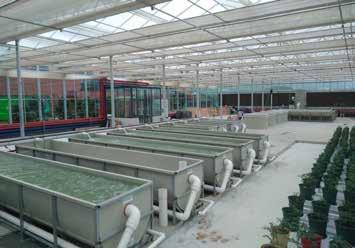
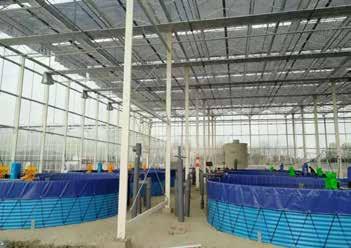
Easy to install and operate, with no technical skills required, BioFishency SPB converts a flow through set up into a RAS system, to support ammonia, CO2 and solids removal, while enriching 02 throughout the process.
As a full water treatment (FWT) system, it outpowers traditional RAS with an all-in-one, plug and play biological filter for highly-efficient ammonia removal. What’s more, when it comes to sustainability, BioFishency SPB uses only 20% of the water required, delivering a higher quality of discharged water, and an exceptionally small carbon footprint.
With years of experience throughout Africa, including large-scale installations in Nigeria, Congo, and Ghana, BioFishency goes beyond standard system installation. From needs analysis, planning and design, to implementation, all BioFishency projects include expert-led training, post-sales customer support and service, and recommendations on the best species and how to grow them, by implementing the ‘right’ growth protocols. BioFishency is far more than RAS – it’s a new era in RAS water treatment.
BioFishency is pleased to offer Farmers Review Africa Magazine readers a free, no-obligation consultation. Contact us to schedule a call with a BioFishency expert.
www.biofishency.com | info@biofishency.com
November -December 2022 | 13
Advertorial
AQUACULTURE REDEFINED
BioFishency – A new breed of sustainable and profitable RAS water treatment solutions BioFishency – A new breed of sustainable and profitable RAS water treatment solutions
20 percent more eggs: Easy and efficient egg production with EasyStep56
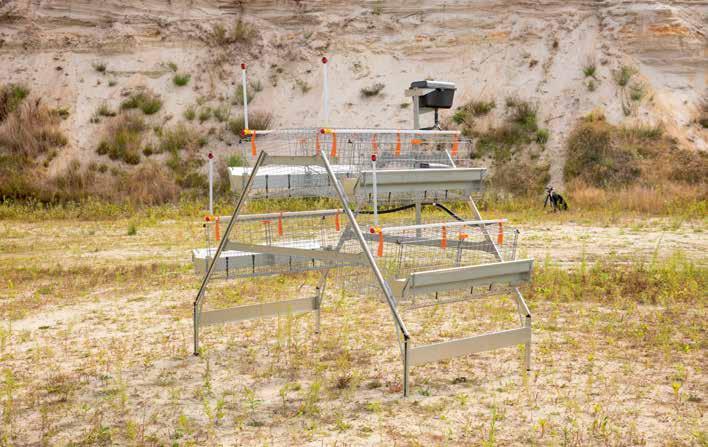

EasyStep56 has been designed for 56 layers
With EasyStep56, the German poultry equipment supplier Big Dutchman offers a clever system for layer management destined to support developing egg production industries in Africa. A comparison with traditional barn egg production systems shows 20 % more eggs that are much cleaner, a five times lower mortality and no feed losses. Due to the well-arranged layout of the cages, the birds do not get dirty from manure dropping down. This contributes to improved hygiene and increases the health of the birds. EasyStep56 has been designed for 56 layers.
The stable management system is supplied in two handy packages, which allows comfortable transport in a larger car or pickup truck. Switching locations is no problem thanks to the compact design: two persons can lift the assembled and empty system onto a suitable transport vehicle. Since no electricity is needed, EasyStep56 can be put into operation immediately.
EasyStep56 has been developed in a way that makes assembling the system very easy,
because only the three tools included in the delivery volume are required. Big Dutchman uses only high-quality materials for its products: The metal parts in EasyStep56 have been galvanized in a special treatment process, making them extremely weather-resistant.
Manure removal and soil fertilisation
Since manure falls directly onto the ground and the system is easy to move when it is empty, it is a flexible and efficient option for fertilisation.
About Big Dutchman
Big Dutchman designs and distributes feeding systems and housing equipment for modern poultry production. Our name is a trademark for quality, rapid service and unsurpassed knowhow. With our economical and environmentally friendly solutions all geared to future needs, we have established ourselves as market leader. We plan to make sure it remains that way and are always at your disposal.

More information: www.bigdutchman. com
Since the manure falls onto the ground, EasyStep56 can be used as fertilising system.
PRODUCT 14 | November -December 2022



Big Dutchman International GmbH P.O. Box 1163 I 49360 Vechta I Germany big@bigdutchman.de | www.bigdutchman.com
solutions for successful animal production Since 1938: your reliable partner in the Middle East & Africa
Turnkey
Bobcat Sharpens Claws with Impressive
SIMA 2022 Display Company presents latest innovations for the agricultural sector

At SIMA 2022, Bobcat is exhibiting three telehander models, including a preview of the new super compact TL25.60 AGRI model. The latter is accompanied by the top-ofthe-range TL43.80HF AGRI and TL30.70 AGRI models, all part of Bobcat’s new generation R-Series telehandler family. The brand new MT100 mini track loader is also making its first appearance at SIMA.
World premiere: A New Star is Bornthe Bobcat TL25.60 AGRI
The star of the show is undoubtedly the first showing in the world of the brand new super compact TL25.60 R-series telehandler. With a lifting capacity of 2.5 tonne and a lifting height of up to 5.9 m, this new Bobcat addition is the most compact model in the range. Florian Hilbert, Telehandler Product Manager for Bobcat EMEA, comments:
“The TL25.60 may be super compact, but its cab is identical to that of Bobcat’s largest R-Series model, which makes it the most spacious super-compact telehandler on the market today. The agricultural version of the TL25.60 will be launched in 2023.” The new R-Series generation of telehandlers provides a top-notch user experience. The completely redesigned cab is a modern, intuitive and intelligent workspace offering an unparalleled level of comfort. When supplied as an AGRI 3* version, one of four packages for the agricultural market, Bobcat provides farmers with an excellent tool for their everyday work.
At SIMA, the company is exhibiting both the TL43.80HF and the TL30.70 in the AGRI 4* configuration.
All Bobcat telehandlers are designed and manufactured in France at the Bobcat factory in Pontchâteau (Loire Atlantique) and benefit from a 3-year/3000-hour manufacturer’s warranty offered as standard (which can be extended to 5 years/5000 hours).

More Exciting Products from the Bobcat Range
The new Bobcat L28 small articulated loader, equipped with AGRI wheels, is also present at SIMA. It offers high lifting capacities in tight spaces, exceptional ease of use thanks to simple and intuitive controls, and low soil disturbance to work on all terrains. The L28 model is fitted with a telescopic lift arm which increases height and reach to 2.65 m.
As mentioned above, visitors are also able to see and try out the latest MT100 mini track loader, which was launched a few weeks ago. With a standard width of 904 mm (increasing up to 1045 mm with the wide track option), the compact
16 | November -December 2022
PRODUCT
dimensions of the new MT100 make it possible to pass through narrow gates and other entrances. They also make it easy to work in tight spaces, while still delivering a powerful performance and high strength.


The L28 and MT100 are also part of the new Ground Maintenance Equipment (GME) range from Bobcat. Gul Nalcaci, Senior Product Manager for the GME range, comments: “Bobcat aims to become one of the top three manufacturers of ground maintenance equipment in Europe. To achieve this ambitious goal, we are rolling out our range across the region. Bobcat’s EMEA offering will include compact tractors, zero-turn mowers and lawn care equipment, which will join the brand’s lightweight articulated loaders and mini track loaders.”
Strong Ambitions in the Agricultural World










By enriching its product offering, Bobcat is strengthening its development strategy in the agricultural sector, and supporting the dynamic activity of the specialized plant in Pontchâteau. After several new investments to develop the plant, this unique Bobcat site is producing telehandlers at full capacity to meet the expectations of Bobcat customers worldwide.


November -December 2022 | 17
ALWAYS THERE, MAKING IT WORK 65 65 YEARS YEARS Contact Us Lancaster Commercial Park 12 Merlin Rose & Lancaster Ivy Drives Parkhaven Ext 5 (011) 899 0000 24 HR Hotline - 083 250 9191 info@bearings co za shop bearings co za Since the founding of Bearings International in 1957 we have grown our product range of Leading Global Industrial Consumable Brands to offer the largest selection of quality and durable stock for various segments within the Industrial Industry Our Global Technical Expertise paired with our Large Stock Holding, Engineering Fleet Service and Nationwide Network of Branches, ensures that downtime is attended to limited and prevented in the future From a local Bearing Distributor to Southern Africa's Largest Industrial Consumables Distributor Mining & Quarries Agriculture Wholesale & Retail Construction Automotive OEM Sugar Petroleum Electricity, Water & Gas Manufacturing Paper & Pulp Exports Our Segments include: H I S T O R Y BEARINGS & SEALS CHAINS & SPROCKETS GEARBOXES & COUPLINGS LUBRICANTS & TOOLS BELTS & PULLEYS MOTORS & DRIVES CERTIFIED ISO 9001 ISO 14001 ISO 45001 a member of the group
Children motivated by morality rather than social norms when it comes to the question of eating animals
Children draw strongly upon moral principles and concerns when they consider whether it is right or wrong to consume meat and animal products.

New research has shown that youngsters are highly conscious of animal welfare, regardless of whether they deem it acceptable to eat animals or their products.
Adults, by contrast, tend to use social-based reasoning to justify the consumption of meat, citing that it is ‘natural’ and ‘necessary’ to do so – although they too will lean upon moral considerations if they take the counter view.
This new insight into the relative prioritisation of moral concerns regarding animals builds upon research published earlier this year that revealed how children think animals should be treated just as well, if not better than humans. This is a belief children may tend to lose during adolescence when they begin to develop a sense of moral hierarchy that gives different values to different animals.
Researchers at the University of Exeter say these new findings could be significant when considering global meat consumption, and, how any attempts to reduce it may require tailored approaches for different age groups.
“We know that children evaluate eating animals as less acceptable than adults and think we ought to treat farm animals better,”
says Dr Luke McGuire, Lecturer in Psychology in the Faculty of Health and Life Sciences.
“Here we asked them ‘why?’ they thought that. The answers go some way to explaining why most children in the western world become socialised as meat-eaters despite their evident concern for animal wellbeing.”
In this new study, the researchers sampled more than 400 individuals, across three distinct age ranges: 9—11, 18—21 and 29—59. Each was asked to evaluate the acceptability of eating
animals and explain their reasons for this. They were further asked whether it was acceptable to eat animal products such as milk and eggs.
The researchers analysed the responses and separated them into those that related to a moral domain – issues of welfare, harm, fairness –those that related to a social domain – such as whether it is natural, normal or necessary to eat or not eat meat – and those that contained a mixture of the two.
Overall, 77% of adults said it was ‘okay’ to eat animals, compared to 51% of children. Within this population of children, the researchers found there was still a strong focus upon moral considerations, primarily animal welfare.
Dr McGuire says:
“In these cases, some of the children are

saying it’s ‘okay’ to eat animals but they’re still expressing concern for animal welfare. You can see them wrestling with the moral dilemma in that reasoning. It may well be the case that many simply do not fully understand the connection between the animal, death and food.”
Adults who felt that eating animals was ‘okay’ drew more heavily upon social reasoning, or a blend of social and moral domains, suggesting that it was ‘natural’ and ‘necessary’ to eat meat for a healthy diet, but that issues of ‘humane slaughter’ and ‘animal welfare’ were important.
When the academics looked at the responses for both the adults and children who said it was ‘not okay’ to eat meat, they found the reasons focused strongly on the moral domain, such as animal rights and welfare.
The picture relating to attitudes towards animal products was less divisive, with 94% of adults saying it was ‘okay’ to eat them, compared to 89% of children.
“This lack of age-related differences speaks to the unique moral quality of killing in the use of animals,” says Dr McGuire.
“Children and adults appear largely in agreement that because animals are not killed to produce milk, eggs, and cheese, then these products and practices are more permissible.”
“Overall, these findings suggest that it is knowledge of food systems coming in during adolescence that changes our reasoning,” concludes Dr McGuire.
“We move from focusing on ethics to thinking about human hierarchies and meat as integral to survival as ways to counteract the cognitive dissonance we experience when thinking about animal harm.”
The research, Age-related differences in reasoning about the acceptability of eating animals, is published in Social Development.
REPORT 18 | November -December 2022
Smallholder Farmers Need Immediate, Actionable Solutions Now Says CGIAR
The CGIAR Excellence in Agronomy Initiative (EiA) hosted a roundtable event to publish a draft Climate Adaptation strategic paper on Agronomy and Climate Change Adaptation entitled Agronomic Adaptive Strategies to Strengthen Smallholder Farmers’ Resilience to Climate Change on November 16, at COP27. The EiA is calling on all stakeholders (governments, private sector, and non-governmental organizations, etc.) to provide comments on the draft paper before its final launch in 2023.
Petra Schmitter, Principal Researcher - Climate Change Adaptation, International Water Management Institute (IWMI). “There is an urgent requirement for a practical response and adoption of inclusive processes to codevelop scalable strategies that enhance smallholder farmer adaptive capacity and resilience.”
According to the paper, climate change and its effects are accelerating, bringing an urgent requirement for a practical response and adoption of inclusive processes to co-develop scalable strategies that enhance smallholder farmer adaptive capacity and resilience. The past decade has seen the world’s farmers in low- and middle-income countries sustain crop and losses of USD 108.5 billion from extreme climate events. “Smallholder farmers don’t have the luxury to wait for the world to figure things out, “says Mr Mandlenkosi Nkomo - Chief Growth Officer, Excellence in Agronomy for Sustainable Intensification and Climate Change Adaptation, speaking at the event. “They need immediate actionable solutions now to help them adapt to climate change, mitigate its impact, enable more yield per hectare, efficiency and competitiveness.
According to the paper, shorter growing seasons, irregular rainfall patterns, rising temperatures, increasingly frequent heat waves, droughts, and floods as well as combinations of the same impair crop growth and have severe impacts on agricultural productivity. Adaptation is urgent and a new paradigm which includes pairing core agronomic practices and technologies with efforts that build farmer capacities to respond to, leverage, and capitalize on the surrounding production environments is required to achieve real change and unlock agronomy’s benefits for addressing climate change.
“Climate change is already leaving its negative mark on agricultural production,” says Todd Rosenstock, Principal Scientist, Climate
Action, Alliance of Bioversity International and International Center for Tropical Agriculture (Bioversity-CIAT). “The changes and challenges that are emerging require a shift in how we conduct science if we are going to support the transition to a just and resilient food system.”

COP27 has seen governments and NPOs including the Bill and Melinda Gates Foundation make commitments to fund innovations for climate smart food systems to protect the yield and quality of crops and livestock from climate change. EiA is calling on governments, private sector, and non-governmental organizations to collaborate and coordinate an urgent response that puts agronomic practices within agricultural programs to help smallholder farmers boost yields, incomes, food security, and ecosystem health in smallholder farming communities.
“Whilst they are the least ones contributing to climate change, smallholder farmers are the hardest hit. Climate Adaptation in all its dimensions has never been this urgent,” says
The CGIAR Excellence in Agronomy Initiative partners with African research institutes, local businesses, and farmer organizations. Together, they are using big data, analytics, and digital platforms to deliver insights that can boost incomes, food security, and ecosystem health in smallholder farming communities.
The initiative not only responds to demand from the public and private sector but also helps increase efficiencies through stronger collaboration and cross-learning among CGIAR centers and within the broader agronomy R&D ecosystem.


Every season, smallholder farmers seasonally make critical agronomic decisions regarding crop choice, planting dates and pest, disease, weed, soil fertility and water management, often based on suboptimal practices and information. EiA is working to promote climate change adaptation through improvements in soil health, yield and yield quality, water use efficiency, and nutrient use efficiency for farmers.
The Climate Adaptation research paper is coauthored by scientists Petra Schmitter, a Principal Researcher - climate change adaptation at the International Water Management Institute and Todd Rosenstock, a Principal Scientist, Climate Action at the Alliance of Bioversity International and International Center for Tropical Agriculture.
As part of the launch, EiA also showcased its Use Cases in Cambodia, Colombia, Democratic Republic of the Congo, Egypt, Ethiopia, Ghana, Ivory Coast, Kenya, Malawi, Mali, Mexico, Morocco, Nigeria, Peru, the Philippines, Rwanda, Senegal, Uganda, Vietnam, Zambia, and Zimbabwe. These Use Cases will generate evidence to develop lessons for global application.
REPORT November -December 2022 | 19
Speakers at Agronomy Roundtable Event
Mandlenkosi Nkomo Introducing the white paper on Agronomy
EIMA 2022, the best ever
The 45th edition of the world exhibition of agricultural machinery closes with the extraordinary number of 327,100 visitors, which improves the record of 2018 (317,000) and establishes itself as a top event on the international scene. Rendezvous in Bologna, for the next edition, from 6 to 10 November 2024.
The 2022 edition of EIMA international reached its highest ever result, with 327,100 visitors, of whom 57,300 from abroad. During the five days of the exhibition - an event of worldwide importance for the agricultural machinery sector, organised by FederUnacoma - the number of visitors exceeded the record (317,000) set in the 2018 edition, before the crisis caused by the pandemic.
The Bologna exhibition thus overcame the most critical two-year period for trade exhibition events (2020-2022), brought about first by the health emergency and then by the difficult economic situation, and strengthened its leadership in the trade exhibition landscape. Foreign visitors, from every continent, accounted for 18% of the total attendance, and 80 official delegations of economic operators - organised thanks to the ICE Agency - animated business meetings in the
Foreign Delegations Pavilion that was specially set up.
“The success of EIMA confirms the growing interest in new-generation agricultural technologies to meet the food needs of a global population that will grow by almost a billion within the next ten years - declared FederUnacoma president Alessandro Malavolti - and confirms how in every region of the world, work is being done to innovate cultivation methods, seeking to make scientific and sustainable use of water resources and soil fertility”. “In this perspectiveadded Malavolti - a trade exhibition like EIMA has an important mission also for the years to come”.
“The result of this edition is the result of a very rigorous monitoring that we carry out as a Federation, trying to offer manufacturers and the trade public increasingly efficient trade exhibition
services - added FederUnacoma General Manager Simona Rapastella - and it is also the result of the substantial investments we have made to promote the exhibition and to involve all strategic targets”. “Additional investments were made by BolognaFiere to improve the structures of the exhibition centre - concluded Rapastellawhich will continue in the coming years in step with a show that has a great present and a great future”.
The next edition of EIMA International is already set for 6 to 10 November 2024, but a major event for agricultural machienry will also take place next year, with the return of Agrilevante by EIMA, the exhibition dedicated to mechanisation for crops in the Mediterranean area, which will be held at the Bari exhibition centre from 5 to 8 October 2023.

EIMA 2022 turns the spotlight on agricultural drones
Aerial drones, mainly used for data collection, are seeing an increase in their use for certain important agricultural operations, such as pesticide treatments. The use of these machines proves particularly effective for spot operations and for interventions in settings that are difficult to access by other mechanical means.
The use of drones in agriculture is now an established practice. Mainly used for the collection of data that are then processed, analysed and combined to perform tasks typical of precision agriculture, aerial drones are now also increasingly being used to perform certain important crop operations. These include pesticide treatments, organic and integrated pest control, and pollination interventions.
This was the theme of the meeting entitled ‘Present and future of vineyard treatments by aerial drone’, which took place on the fourth day of EIMA International as part of the initiatives promoted by EIMA Campus. Aerial drones - it was said during the seminar - can be used both on herbaceous crops and arboreal crops (vineyards). In both cases, the use of this particular type of technology has many strengths, although variables relating to the orography of the land, offtarget losses and possible difficulties in planning flight routes must be taken into account.
However, drones offer the great advantage of performing ‘spot’ treatments, i.e. on the


individual plant, and of working successfully even in complex environmental settings (such as terracing and steep slopes) that make it almost impossible to use traditional machines such as tractors and sprayers. In addition, the use of drones for pesticide treatments has important safety implications, as it prevents the operator from being close to the chemicals contained in pesticides.
Agricultural drones were also discussed today at the conference entitled ‘The evolution of the use of drones in agriculture for aerial spraying: the Marche project’. During this meeting, the speakers not only presented the specific experience gained in the Marche region, but also stressed the need for regulatory interventions to clearly and precisely regulate what is to all intents and purposes an emerging field of activity.
20 | November -December 2022
EVENT
World Farmers Organisation General Assembly 2023 to be held in South Africa















The South African members of the World Farmers Organisation (WFO) – which include our network of family farmers Saai, AFASA and WRSA – have won the bid to host the World Farmers General Assembly in South Africa in June 2023.

The WFO represents more than 80 national farmers organisations in 56 countries and 1,4 billion farmers worldwide. The General Assembly is a premier event on the Internal Agricultural Calendar and is the most influential gathering of farmers and agricultural leaders in the world. The WFO General Assembly visiting African shores
is a once in a lifetime event, allowing for key opportunities to showcase new technologies and agricultural practices.








During the 2022 WFO General Assembly in Budapest, Wildlife Ranching South Africa (WRSA), an association representing the largest collective of game farmers in the world made, an application for affiliated membership of the WFO. Two Saai members were elected onto WFO Committees as Representatives of the African continent. One of our Saai members, Sivile Mabandla, was elected onto the WFO Policy Committee on Livestock, while Richard York was
nominated as the Chairperson of the Committee on Nature and Biodiversity, Showcasing the pivotal role we play as Representatives of the African continent.
Hosting the 2023 WFO General Assembly is a collaborative venture between Saai, AFASA and WRSA. We look forward to working with government, the agricultural and wildlife sector, as well as fellow organisations from within South Africa and the rest of Africa to ensure this event is a resounding success.
November -December 2022 | 21 Genuine for over 50 years! Grain Cooling GRANIFRIGOR ™ The most natural way of grain preservation • Protection against insects & fungi • Without chemical treatment • Short amortisation period • Low energy demand • Independent of ambient weather • No respiratory losses FrigorTec GmbH • info@frigortec.com • www.frigortec.com AZ_FRA_GRANIFRIGOR_180x130_RZ.indd 1 10.02.22 16:27
EVENT
New lender enters South Africa’s agriculture sector
The shipping industry in Africa is finding ways to decrease its carbon footprint. Africa can become a leader in green shipping in the agricultural sector by reflecting on its history and following precedents set by the growing environmental movement.
A new financial entity was launched today with a specific focus on creating and managing a financial services operation, supporting all the stakeholders in the South African agricultural value chain. AgMerchant Capital (Pty) Ltd (“AgMerchant”) aims to be a keen participant in the agricultural financing services industry through the provision of custom-made solutions.
Founded by Chris Venter, a well-known and respected figure in the sector, AgMerchant aims to provide the entire value chain with financial support, backed by innovative, digitised, and long-term sustainable financial services solutions.
“The South African agricultural industry is critical to the continued growth of the economy, as well as to food security and job creation, and is expected to maintain and grow its food export capabilities, contributing to a positive trade balance,” says Venter.
“It is thus essential that the industry should be supported by a robust and focused commercial agricultural lender. Changes in the agricultural finance landscape – some of which were brought about by the COVID-19 pandemic – over the past three years support this viewpoint. In addition, we have seen Land Bank re-assessing its role as a commercial farmer financier. We believe there is room for a financier that understands the cyclicality of the industry and an entity that can finance the flow of the commodity rather than just relying on the strength of the balance sheet of the farmer. It is therefore our intention to provide the entire agricultural value chain with financial support to assist the sector in receiving the support it needs to grow and thrive.”
Venter goes on to indicate that the relatively small but extremely nimble company will be able to

quickly react to what clients in the sector need, with efficient decision-making that can assist those who need rolling financial support.
“Like all businesses, the people involved are the most important element of success. It was therefore important to put a team of highly qualified and experienced people together –people who understand banking and finance but also have many years of experience in the agricultural market. It is exciting to build a company and position a new brand with an excellent team in the current agricultural sector and the opportunities it offers.”
Venter himself has some 30 years’ experience in financial services and agriculture, and a combination of both, so he has an exceptionally good idea of what is needed. In his banking career as well as in his time as CEO of AFGRI,

he was responsible for managing and building high-performing teams. His 14 years of merchant and investment banking experience and 16 years’ experience in the agricultural and food industries and his vision for food certainty and the economic benefits this brings, not only to the country but to those directly employed in the sector, remains very close to his heart.
AgMerchant was established with a long-term investment focus and an understanding of the importance of food certainty in South Africa. It has the necessary licences and regulatory registrations to finance the agricultural market. It already supports customers with foreign exchange, asset and commodity finance and is constantly adding to its product offering.
In conclusion, Venter believes that the agricultural sector is critical to the wellbeing of South Africa, not only in pursuit of enabling job creation but also for food security and the ability to earn forex for the South African fiscus. “The sector has a history of producing and exporting quality produce and in some instances massive quantities are supplied to processors to ensure food security for the country.”
AgMerchant forms part of a group of companies founded by Sovereign Capital Holdings (Pty) Ltd, which has as its passion to support food certainty on the African continent. Part of the group is an online e-commerce platform for farmers that already offers more than 400 000 products. AgMarket will continue to expand its digital warehouse offering for it to eventually include all products required by farmers to produce food. Both AgMarket (www.agmarket. co.za) and AgMerchant are supported by a technology company, AgXchange, which focuses on digitalisation in the agricultural sector.
INSIGHT 22 | November -December 2022
How To Optimize Weekly Maintenance Schedules On Agricultural Equipment
Agriculture has played a significant role in the development of human civilization.
Over the years, tech advancements altered agricultural processes. Various tools have made farming much simpler and more efficient. Due to mechanization, crop yields have risen over the years. Now you have specialized equipment catering to all kinds of crops and conditions.
The amount of labor working in agriculture has also gone down. According to data from Statista, 43.8% of total employment in Africa was in agriculture in 2020, a significantly lower trend compared to 2010 when 49.3% of total employment was in agriculture.
Over the coming years, this trend is going to continue, as more and more workers are moving into the service industry. The low number of workers available for the same amount of farmland requires more agricultural equipment to take over many processes requiring manual labor.
Agricultural equipment maintenance

As workforce participation in farming decreases, the use of agricultural equipment will play a prominent role. You will need to ensure optimal performance and long life from your equipment to increase the return on investment. For achieving these goals, effective maintenance of agricultural equipment is critical.
Imagine your crops are ripe for harvesting, but the harvester you need does not work. Reactive maintenance procedures will take up an indeterminate amount of time, and you will have to arrange for another machine to harvest the crop in time. This is costly and will cause significant pain for your business.
Well-maintained equipment ensures that such mishaps don’t happen. Farm maintenance ensures machine availability and optimum performance at the right time. Regular maintenance helps to reduce the wear and tear experienced by equipment. You will not need to replace parts regularly. Less unexpected downtime is also a benefit of improved productivity of farm maintenance.
A farm maintenance plan helps to systematize all the maintenance activities. It helps to perform preventive maintenance activities diligently. Maintenance plans help to schedule tasks regularly, allowing you to bring regularity to maintenance activities. It also helps to make
equipment maintenance a core and essential activity on your farm.
Optimizing maintenance schedule
Maintenance schedules give a proper structure to maintenance activities on a farm. Weekly maintenance activities are the pillars of this structure. Once you have created a maintenance plan, you should continually optimize the schedule. You will come across various aspects of maintenance that you might not have accounted for. The following sections cover how you can identify and work around weaknesses to optimize the weekly maintenance schedule.
Monitor
You need to keep an eye on the maintenance performed according to schedule. Keeping a record of the maintenance activities performed and the outcome of such activities is essential. This gives you an idea of how well you follow the schedule. The elaborate data collection also points towards schedule deficiencies and conflicts.
Ideally, you are using CMMS software for maintenance. Such software solutions help you track and record maintenance activities on your farm. Those also help to make the analysis easier. Consider using a software solution – it helps to streamline your processes and makes monitoring easier.
Prioritize
You need to have an experienced team to analyze and monitor the information to generate actionable insights. The team must have experience with farm and maintenance activities.
Long-term employees are ideal recruits for this team. The insights will give many avenues for improvement. Prioritize these according to the importance of your farm. You might have included some activities in the weekly schedule that need not have such a high frequency. You might also identify some activities in the monthly schedule that need more attention. Similarly, prioritize all the maintenance activities on the farm.
Reinvent
Once you have identified the deficiencies and prioritized them, the next step is to create a new schedule – account for the results from the previous steps. Layout the activities Gantt chart to see if there are any conflicts in the new schedule.
Assign a maintenance operator for each of the tasks. If they are assigned overlapping tasks, try to recreate the schedule to accommodate the changes required. You also need to consult with the maintenance team to understand their concerns. If they have any grave concerns, you need to address them before finalizing the new schedule. It is also wise to have a trial run to check if the new schedule is viable and does not leave any gaps in farm maintenance activities.
Optimization: A continuous process
Regular maintenance of agricultural equipment is important for the smooth operation of your farm. A well-designed maintenance schedule ensures no maintenance activity falls through the crack.
The maintenance schedule you create is not set in stone. You will find that it needs improvement when practiced in reality. Optimize the processes to fit the new findings and understand maintenance requirements.
Farm operations and maintenance need to follow the philosophy of ‘Kaizen’. It is the philosophy of adopting continuous improvement in the production process. The same can be applied to farm production and maintenance. There is always a chance to improve the processes and you shall pursue them with a consistent effort to improve the productivity of your farm.
–Bryan Christiansen is the founder and CEO of Limble CMMS. Limble is a modern, easy-to-use mobile CMMS software that takes the stress and chaos out of maintenance by helping managers organize, automate, and streamline their maintenance operations.

INSIGHT November -December 2022 | 23
Bryan Christiansen
Africa needs US$86 billion for climate Adaptation
Africa needs an estimated US$86.5 billion for climate change adaptation by 2030 as part of the continent’s special needs and circumstances needed to patch up the myriad loss and damage dwarfing the continent’s economic growth, a United Nations report shows.
According to the African Group of Negotiators (AGN), representing the continent during the ongoing COP 27, the US$86.5 billion cost estimates fall under the Sixth Assessment Report (AR6) of the United Nations (UN) Intergovernmental Panel on Climate Change (IPCC). This is a sixth in a series of reports which assess scientific, technical, and socio-economic information concerning climate change.

The AGN of which Zambia is chairing during the ongoing COP 27 in Egypt, notes that the global share of the adaptation costs averages US$127 billion needed by developing countries, despite the continent’s contribution of a paltry 4%. The continent is currently seeking a prompt resolution of its special needs and circumstances that has affected its climatic conditions which have dwarfed growth of most countries affected in most growth sectors including agriculture, affecting food output.
A joint statement by Alioune Ndoye, Minister of Environment, Sustainable Development and Ecological Transition of Senegal and President of the African Ministerial Conference on the Environment (AMCEN) and Zambia’s Minister of Green Economy and Environment and, Chair of the African Group of Negotiators and seen by FRA reaffirm the support to the climate resolution rocess.
AGN in its rallying cry seek implementation on deliverables on the needs and circumstances which severely afflict the continent, currently hosting the event, the third conference since the conference was initiated 30 years ago
The negotiators remain optimistic that the failed deliverables during Glasgow’s COP 26 would be actualized during the Sharma Sheik and help overcome the climate crisis. It is envisaged the COP 27 would result in tangible outcomes, reflecting ‘people’s aspirations, including Africa’s special needs and special circumstances’
Citing the findings under Intergovernmental Panel on Climate Change (IPCC) Sixth Assessment Report (AR6) Africa is feared to be impacted more than any other continent, despite its minute emission contributions to the world’s total emissions.
More adaption is needed before 2030 but resources are needed to reduce the continent’s vulnerability as adduced by the scientific findings that show its dire situation.
“Africa is a continent plagued by complex overlapping challenges, and many generations of Africans have been left behind and suffer consequences of actions not of their own making” the statement says. The systemic problems facing Africa, AGN note, require dedicated and targeted interventions. This will also unleash our continent’s potential to contribute to achieving the 1.5c world, concerted efforts by all are needed as hunger and damage loom.
In a continent that is already food insecure, Africa has suffered a 34% decline in food production and loss & damage to agricultural productivity. (IPCC AR6).
Other concerns that need redress at the height of the COP 27 is to redress Climate finance, adaptation, mitigation, loss and damage and means of implementation.
On adaptation, intensive technical work undertaken throughout the year and until recently on the Global Goal on Adaptation there is a need for all Parties to jointly work constructively for reaching an agreement on a framework to enable achieving and assessing progress towards the Global Goal on Adaptation which is more urgent than before.
The AGN envisioned that adaptation would be treated with the urgency needed as it underpins Africa’s survival for Africa. The outcome of the COP27 is anticipated to deliver on scaling up adaptation action and support including GGA.
“COP27 is our fighting chance to ensure that the multilateral process delivers on its promise of an adequate adaptation response in the context of the 1.5 temperature goal” IPCC has earlier raised the alarm on the narrowing window for action on adaptation with widening adaptation implementation and finance gaps.
Any slight delay to act in adaptation action at scale entails another set-back to Africa’s hard-won development gains and another stumbling block in Africa’s path to eradicate poverty, achieve food security and sustainable development
AGN notes Africa’s extreme exposure to diverse Loss and Damage which has manifested mostly in various sectors and are further associated with extreme and slow events over different time scales;
AGN envisions a durable resolution on an effective and well-resourced Santiago Network for Loss and damage to catalyze technical assistance to developing countries and establish a loss and damage finance facility with a clear roadmap for its full operationalization;
Provision of finance remains critical for the implementation, a reiteration on developed country Parties to engage constructively for a meaningful finance package. This should include delivery on the much promised USD 100 billion.
Africa has and continues to suffer the brunt of the adverse effects of climate change and have not received the required multilateral support to face the climate challenge.
AGN recommends that African countries have access to scaled-up levels of new and additional and predictable grant and concessional finance. The funding could be deployed effectively to create enabling environments by beginning to buy down risks and create new asset classes for clean investments.
This would allow for more significant mobilization and leveraging of public and private finance and enhance access to the elusive and unseen trillions of dollars.
The delayed disbursement of the US$100 billion per year goal by 2020 from developed to developing countries remains unfilled and should be disbursed without further delay for building trust and faith in the multilateral process of addressing climate change. “We urge developed countries to deliver on their commitment to meet the goal and ensure the progression of efforts in the on-going mobilization of climate finance.” The statement notes.
On Mitigation, AGN and other interest groups hope for sustained engagement. There is a need for those in technical work, tasked to redress concerns and effectively design a dynamic mitigation work programme to culminate in concrete decisions on scaling up both mitigation ambition and support for just transitions.
Other expectations by AGN include the mitigation work programme accelerating the implementation of NDCs. Developed countries should take the lead in implementing their targets while providing enhanced support to developing countries.
COP27 is expected to design an effective and dynamic work programme and result in concrete decisions on scaling up both mitigation ambition and support for just transitions.
INSIGHT 24 | November -December 2022
UN Project: Homebiogas will turn farm waste into renewable energy in Rwanda

HomeBiogas will be supplying biogas systems for the treatment of organic waste for farmers in Rwanda, after winning a recent UN tender. HomeBiogas develops and markets biogas systems for the on-site treatment of organic waste and its transformation into renewable energy for cooking or heating. The systems will be treating the organic waste of farmers in communities in eastern Rwanda and will include installation and training of the locals in the use of the systems.
One of the main sources of methane gas emissions is the disposal of organic waste in landfills. HomeBiogas’ solution has a significant environmental value due to its ability to reduce methane gas emissions. HomeBiogas’ system treats organic waste on-site and thus significantly reduces methane gas emissions, and results in the reduction of over six tons of carbon dioxide per year for each system. In addition, the innovative technology developed by HomeBiogas provides a thorough solution for the on-site treatment of organic waste and thus generates significant savings for its customers in the growing costs of removal, transportation, and landfilling of waste.
The signing of the agreement with the United Nations followed the selection of the company as

an official supplier of the United Nations, which allows the company access to United Nations tenders for the supply of waste treatment systems in other United Nations projects around the world. HomeBiogas reports its third win in the last year in a UN tender after previously winning two UN tenders (Zimbabwe and Malawi) for the supply of biogas systems for the treatment of organic waste in refugee camps in Africa.
The reasons for the UN’s choice of Israeli technology lie, among others, in the fact that these systems treat waste in an ecological way, and turn it into energy for local use. In addition, the systems come in a convenient package for storage and transportation, are simple to install, durable for a period of fifteen years, and are easy to use. These systems are sold in 107 countries around the world.
By turning farm waste into clean cooking gas and organic fertilizer, these systems will advance people’s lives; farmers will become more resilient with their own-grown organic fertilizer and families will enjoy their own sustainable energy source. The innovative technology developed by HomeBiogas provides farmers with efficient and effective waste-to-resource solutions that improve crop outputs and revenue opportunities.
With a regenerative approach to agriculture and farming, and as the prices of chemical fertilizers are on the rise, the HomeBiogas self-sustaining solution creates a multipurpose biofertilizer that supplements chemical fertilizers, stimulates the soil, strengthens the plant, and allows farmers to save on outputs.
HomeBiogas has already been implemented in thousands of farms across the world that are now enjoying tens of thousands of litters of organic fertilizer as well as a steady flow of cooking gas .
Oshik Efrati, Founder and CEO of HomeBiogas: “We are grateful that the UN has selected our technology for the third time this year. Our first two projects with the UN in refugee camps in Malawi and Zimbabwe were successfully implemented and now winning this tender will also bring our technology to hundreds of families in Rwanda. We see this win as an important business development and we believe it will lay the foundation for additional opportunities. We are witnessing a growing global demand for climate tech and waste management innovation, and this is noticeable at COP27, where we’re currently showcasing our solutions.”
November -December 2022 | 25
PROJECT
HomeBiogas announces this achievement while participating in COP27, focusing on climate change solutions for Africa
Working with Communities and Nature to Build Resilience to Shocks and Stressors in Africa
By Dianne Tipping-Woods of Africa Nature-Based Tourism Platform (https://NatureBasedTourism.africa/)


Farmer Ndaula Liwela, from Machita settlement in Namibia’s Zambezi province, points to the scattered flowers of a baobab tree lying on the dry ground close to her homestead. “The fruit this year will be small and few,” she says, even though the iconic tree is known for its ability to store water and thrive in dry conditions. It’s several weeks after she would normally have planted her crops, “but we stopped ploughing when we saw the clouds were not even starting to build”.
As the United Nations Framework Convention on Climate Change (UNFCCC) COP27 takes place in Sharm el-Sheikh, Egypt, from 6 to 18 November 2022, there are hopes that ‘the African COP’ will mobilise the funds and actions needed for a climate-resilient Africa, but this means very little to Liwela, whose immediate concern is around how to feed her family in the face of an increasingly uncertain future.
Her home in Namibia’s northernmost province lies within the Kavango Zambezi Transfrontier Conservation Area (KAZA), the five-country transboundary park formed to protect biodiversity while supporting people who live in the landscape. It is not far from the Zambezi River, but is waterscarce. Each year, Liwela supplements her livelihood by harvesting baobab and other wild
fruits, but this year, even this wild pantry looks likely to let her down. Many parts of Africa are increasingly affected by the dry season growing hotter and rainy seasons arriving later. Extreme events such as drought are increasing in frequency and severity.
“Liwela’s story is not unique. Over the last year, we have interviewed farmers, fishers, grass harvesters, and many others who rely on natural resources in this region. They have noted the impacts of changing weather patterns on their ability to sustain themselves. This leaves them vulnerable, not just to climate change impacts, but also to other shocks, like the COVID-19 pandemic,” says WWF Namibia’s Sigrid Nyambe. She has been working with communities in this region to gather data on climate change impacts on communities as part of WWF’s Climate Crowd program (http://bit.ly/3tAPcgb). This information informs pilot projects to help rural communities adapt to the changes they are experiencing while reducing pressure on biodiversity.
The latest IPCC Working Group II report on Impacts, Adaptation, and Vulnerability (http://bit. ly/3gbdmuz) shows that many climate risks are bigger than previously anticipated, particularly for vulnerable African countries. Many nations have included nature-based solutions as part of their
national climate change adaptation plans, but need financial and technical support for action at a grassroots level.
Addressing the Forum on Finance for NatureBased Solutions organized by the UNFCCC’s Standing Committee of Finance, UN Climate Change Deputy Executive Secretary Ovais Sarmad said: “We face a double crisis of climate change and nature. The two are inextricably linked. The mutual, intertwined destruction grows worse by the day. If nature and climate change are linked, it only stands to reason that naturebased solutions lie at the heart of addressing both.”
Yet, according to Inger Andersen, Executive Director of the United Nations Environment Programme (http://bit.ly/3EAa78f), in a recent article for the United Nations Framework Convention on Climate Change, “only about 133 billion dollars are channeled into nature-based solutions, and investments must triple by 2030 to meet the climate, the nature, and land-neutrality targets.”
“In the last few years, we’ve seen two crises, climate change and a global pandemic – intersect. Both impact the most vulnerable communities the hardest and affect how people interact with
FEATURE 26 | November -December 2022
As the United Nations Framework Convention on Climate Change (UNFCCC) COP27 takes place, there are hopes that ‘the African COP’ will mobilise the funds and actions needed for a climateresilient Africa
their natural resources,” says WWF director of climate, communities, and wildlife Nikhil Advani. For example, in Namibia, climate change and the pandemic both increased the unsustainable use of natural resources, says Advani, who also runs the African Nature-Based Tourism Platform (http:// bit.ly/3AKXRRd). This project was launched in 2021 to connect funders to communities involved in nature-based tourism across 11 countries in eastern and southern Africa, helping to identify the hardest-hit communities and enterprises and their most pressing needs.
Over half of Namibians interviewed in 2021-2022 for the Climate Crowd project reported direct impacts on local wildlife, including high mortality rates and wildlife migration to other areas where water and food are more abundant. Fifty-eight percent of respondents reported that crops had failed or produced very little in recent years, and 62% noted declines in livestock health. About three-quarters of respondents said that the wild fruits harvested seasonally are also declining. And as natural resources become increasingly difficult to find, more people and their livestock come into conflict with wildlife.
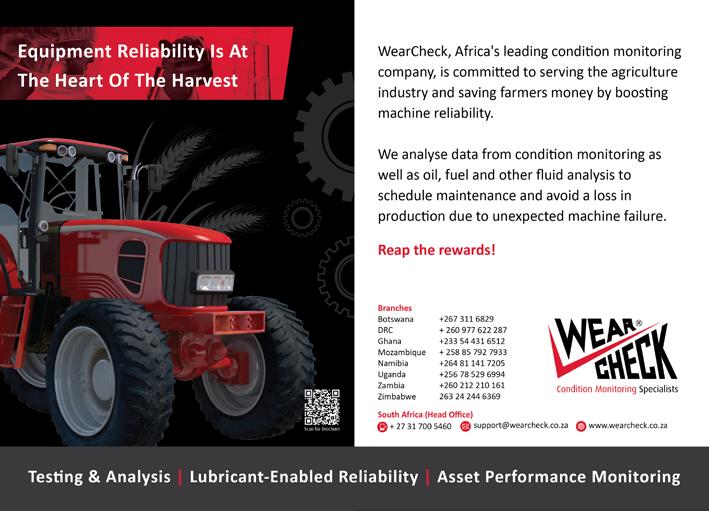
“The data we’ve collected shows that we need to focus more on adaptation efforts that protect the people who are most vulnerable,” he said. Within KAZA, there are examples and opportunities
for resilience-building through initiatives that are also climate adaptation strategies. These practical, nature-compatible pilot projects being implemented through Climate Crowd often draw on solutions shaped by a community’s own traditional, indigenous and local knowledge and practices.
Beekeeping is an environmentally friendly and potentially lucrative complementary industry helping communities cope with unpredictable crop yields. Youth in these communities are frequently unemployed and lack access to income-generating activities as rain-fed agriculture declines. In Namibia, one such project involves training youths from Muyako, Omega 3, and Luitcikxom villages in Bwabwata National Park in beekeeping. David Mushavanga, a local bee farmer with over 16 years of experience, will implement the project in partnership with WWF Climate Crowd and the Ministry of Environment, Forestry, and Tourism.
Other projects being implemented in Namibia will focus on increasing water security through rainwater harvesting and solar powered boreholes, climate-smart agriculture, installing clean cookstoves, and other alternative livelihoods such as craft making.
“Climate Crowd is a bottom-up, communitydriven initiative. It’s important to support projects
the community feels a sense of ownership over. These projects can help them build resilience to multiple shocks and stressors. Environmental emergencies such as climate change could cause social and economic damages far larger than those caused by COVID-19,” says Advani.
Through Climate Crowd and the African NatureBased Tourism Platform, WWF works with community-based natural resource management organisations in several other eastern and southern African countries to provide funding and technical support for solutions that protect natural ecosystems and benefit people while building resilience to future shocks and stressors.
For example in Malawi, a recently funded project led by African Nature-Based Tourism Platform partner KAWICCODA, supports the scaling up of conservation-friendly alternative livelihood activities within the five-kilometre belt around Kasungu National Park.
“Both the climate crisis and pandemics threaten the wellbeing of people and nature, which is why we urgently need to pilot projects that make people and nature more resilient. We can learn from these grassroots-led initiatives. And then we can scale them,” says Advani.
November -December 2022 | 27
Navigating climate change: helping Malagasy farmers safeguard their livelihoods
 By Marcelle Ayo, IFC Country Manager for Madagascar
By Marcelle Ayo, IFC Country Manager for Madagascar
However, Madagascar’s climate insurance sector is currently underdeveloped. Climate insurance pilots have been conducted in the country’s south, focusing mainly on maize, beans, and peanut value chains, but they have yet to reach farmers in other parts of the country—or those growing other crops.

The IFC study, the Madagascar Agri-Insurance Diagnostic, outlines several steps the Malagasy government could take to increase the availability of—and market for—insurance products, including policy changes and awareness raising. The private sector also has an important role to play here developing innovative, attractive insurance products and distributing them.
The foundation for the insurance market to grow in Madagascar is there. The government passed an insurance law in 2020 that aims to strengthen the sector and boost financial inclusion by broadening the types of insurance permitted, including microinsurance, digital insurance, and index insurance.
The government could also promote insurance by embedding it in other agriculture development programs, raising awareness about its benefits and by subsidizing low-income farmers. The IFC study found that it is essential to combine climate insurance with other products, such as access to credit, to make it more attractive to smallholder farmers.
Because of its geographical location and climatic conditions, Madagascar is especially vulnerable to extreme weather events and natural disasters, including droughts, cyclones, floods, and wildfires.
These dangers, many of them climate change related, are posing grave risks to the country’s important agriculture sector, which is a major employer and contributes almost a quarter of the island nation’s GDP.
Just this year, for example, cyclones Batsirai and Emnati destroyed more than 60,000 hectares of predominantly smallholder rice fields, reducing local rice production by almost 40 percent.
While the world works to limit greenhouse gas emissions and reign in global warming in the medium and long terms, one way to help Malagasy farmers today is with targeted insurance products to protect their livelihoods.
A new study from IFC estimates that 80 percent of small-scale Malagasy farmers growing cloves, maize, rice, vanilla, and other crops are interested
in specialized insurance products, such as agricultural and catastrophic risk insurance.

In Zambia and Kenya, for example, index insurance (which pays out benefits for losses through a predetermined index, such as rainfall levels) has proven to be effective in providing coverage to smallholder farmers. IFC played a key role in developing the index insurance market in both countries.
Based on the study’s findings, IFC will design a new climate insurance pilot for Madagascar, in collaboration with insurance companies and key public and private stakeholders, in regions not covered by previous pilots and bundled with other products.
Of course, insurance is not the only solution to climate and weather-related challenges. A combination of practices and tools will be vital to build resilience and promote adaptation in Madagascar, including crop rotation, diversification, and the use of drought-tolerant seed varieties and more efficient water management methods.
The right steps today to develop innovative, inclusive insurance products – along with other tools – will help build resilience and confidence in the sector, boost agricultural productivity, safeguard farmers’ livelihoods, and drive sustainable economic growth.
FEATURE 28 | November -December 2022
Image Credit _Huybert Groenendaal from Epix Analytics LLC.
Image Credit _Huybert Groenendaal from Epix Analytics LLC.
Agroecology, best remedy for Africa’s food insecurity’ - CSOs
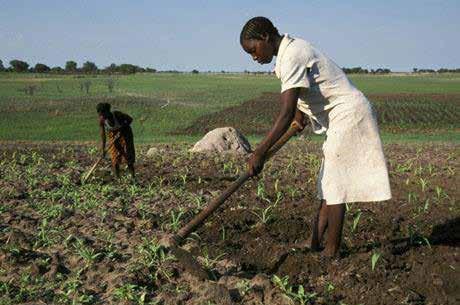
drafted an ecologically inclined policy that will reverse the fate of the sector after years of industrial practices”
And Caritas Zambia, a faith-based organization and one of the lead campaigners of agroecologyglobally noted various misgivings which according to analyst, Eugene Ngandu contended needed serious reviews to sustain agriculture practices.
Ngandu, whose organization is part of the COP 27 in Egypt in his presentation and support for policy shift cited among other reasons for migration that agroecology was Socially Just; Safe and provides healthy food, reduces rural poverty because of reduced cost of production and respect of Indigenous Knowledge and farmer’s rights.
Climate Change campaigners in Zambia have drafted a policy favoring a shift to agroecology against the traditional industrial agriculture practices that heighten climate change practices inimical to promoting and safeguarding food systems.
A consortium of Civil Society Organisationsspearheaded by the Agriculture Consultative Forum (ACF) contend that the persistent application of industrial farming practices has eroded Africa’s food security.
The face of the industry, the bedrock of Africa’s food security, has been heightened by the consistent application of fertilisers and other chemicals that affect soil texture, affecting yields and further threatening the promotion of traditional seed that carries the nutrition for effective body growth.
Speaking in Lusaka during the ‘stakeholders’ engagement on the drafting of the national agroecology strategy, Wednesday, ACF executive director, Masiye Nawiko noted the magnitude of the effects imparted on the agriculture sector through the long-term use of the ‘uncouth practices’ that have eroded the continent’s desire to be food secure, hence the call for policy change.
The consortium, embracing members of the Zambia Climate Change Network (ZCCN), anticlimate changer campaigners, among other players that have joined hands in seeking reversal of the ‘loss and damages caused to the continent through bad agriculture practices that have contributed to climate change seek the adoption of the agroecology law to reverse the effects.
During the engagement at which the consortium handed over the ‘blank draft copy’ to the Government through the ministries of agriculture, fish and livestock, the consortium contends that the persistent encouragement of the industrial practices that have affected among others, soil texture, needed to be redressed and replace with agro ecological practices that are safe and predictable.
Mr. Nawiko, one of the members of the technical group reviewing Zambia’s National Agriculture Investment Policy to enhance the country’s food security, after the earlier one failed for among other reasons, lack of financing, poor participation of players, argued that agroecology was the ideal mode for Africa to retain its agriculture potential and reduce “food handouts”.
“We have reviewed the effects of the current practices (industrial agriculture) and we have

Other reasons relating to its environmental friendliness, environmentally friendly, less soil degradation, no loss of biodiversity, no contamination of the ecosystem, economically viable, reliance on farm resources, increased income per unit area and highly marketable products.
It is providing more money for families from farm produce, and provides more funds for the government to spend on other development agenda while promoting nutrition due to multicropping.
Caritas, concerned at the increasing support by African Governments towards the use of fertilisers at the expense of local seeds and types of manuals, compost and other soil conservation methods urges technocrats in the fields of land, forests and environment to strive to promote practices that safeguard the natural resources.
The players are asking for the inclusion of other small grains and more legumes in the FISP. There is a need to promote and contribute to the preservation of indigenous seeds and foods.
The Government, through its technocrats in working with interest groups should advocate for agroecology and help influence the government to recognize its importance in improving the lives of community members.
FEATURE November -December 2022 | 29
Farmers embrace smart insurance to guard against climate shocks
With the help of images taken via satellite and smartphones, ACRE Africa’s Picture Based Insurance (PBI) project is working to make smart insurance accessible to Kenya’s smallholder farmers. Doing so will help build awareness and trust around insurancebased products while simultaneously enhancing resilience to challenges posed by climate-related shocks.
In Kenya, 80 per cent of farmers are smallholders. However, despite the critical role they play in providing food for the nation, these farmers face numerous challenges. Smallholder crop yields are traditionally quite low and climate change is not only increasing the incidence of pests and diseases, but heightening the risk of more frequent extreme weather events, including drought and flooding.
“Reports state farmers lose up to 90 per cent of their expected yield due to climate risks,” revealed Lilian Waithaka of ACRE Africa.
Faced with such losses, many smallholder farmers are reluctant to invest in their farms and instead engage in unsustainable practices to try to save money, “such as keeping their children
out of school, selling off productive assets, and reducing the quality of their diets,” Waithaka shared.
Hurdles to overcome Insurance can help cushion smallholder farmers from crop and financial losses that occur as a result of climate change, yet many are reluctant

to invest in such schemes. But why?
According to Waithaka, the three main prohibiting factors include: Affordability: traditional insurance schemes are too costly for smallholder farmers, Trust: a lack of trust in insurance products among farmers prevents them from securing insurance premiums and Isolated approach: farmers often do not engage with other technologies and practices that can support resilience, such as the planting of stress-tolerant crop varieties, adherence to advisories, and implementing good agronomic practices.
However, through their innovative insurance offering – supported by the International Development Centre (IDRC) in partnership with the Australian Centre for International Agricultural Research (ACIAR) – the team at ACRE Africa is taking action “to link smallholder farmers to risk mitigation and climate adaptation solutions so they can comfortably invest in their farms,” revealed Waithaka.
Counting the payoffs

“The PBI project offers farmers an affordable, innovative, inclusive, climate-smart agriculture solution,” Waithaka stated. It’s also easy to join –farmers simply dial a USSD code and choose the

30 | November -December 2022
INDUSTRY INNOVATORS
type of crop they want to cover, after which they are automatically enrolled onto the scheme.
To support PBI uptake and enhance trust levels around insurance, ACRE Africa has also established a network of ‘champion farmers’ in Kenya. These individuals are “key opinion shapers in the villages in which they reside,” explained Waithaka. Two-thirds of champions are women – and it’s been found that female champions are more likely to successfully recruit new women farmers to the PBI scheme.
At the heart of the PBI approach lies imagery, with photographs taken of farmers’ crops collected using satellites and smartphones – with champion farmers using an app called SeeItGrow to “take images of registered farmers’ crops throughout the season, which are then used in the evaluation process at the end of the season,” revealed Waithaka.
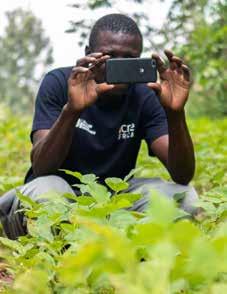
The project has developed three different machine learning models to help process the images collected, classifying crops according to their growth stage, type of damage, and extent of damage. At the end of the season, a panel of experts – comprising insurance companies and agronomists – evaluate the images to give them a ‘score’, which forms the basis from which farmers
can make claims.
Building resilience
Farmers who take out PBI are also supported in other climate-related aspects. For instance, ACRE Africa continually provides farmers with training on how to protect their crops against climate shocks, connects them to companies that sell stress-tolerant seed varieties, and use
information services to encourage them to adhere to good agronomic practices and advisories. “By helping build the resilience of smallholder farmers,” stated Waithaka, “we’re supporting individuals but also trying to foster economic growth and food security.”
ACRE Africa’s approach is proving successful. So far, the champion farmers have collected over 60,000 field images from over 7,300 farmers signed up to the PBI scheme. Of women farmers offered PBI, over half take it up – including Elizabeth, a 42-year-old mother of three living in Machakos County. “In 2021, she took out insurance cover by paying a premium of US$2,” shared Waithaka. Following a drought later that year, which saw many farmers lose their crops, “Elizabeth was able to get US$15 in compensation through her insurance – which she used to buy three bags of seeds to plant the following season.”
While ACRE Africa is keen to enhance the livelihoods of smallholder farmers, they’re also aware of the project’s impact on a larger scale. “By helping build their resilience,” stated Waithaka, “we’re not only supporting individuals, but also trying to foster economic growth and food security.”
CESCO opens a new logistics and assembly center in southern Germany


On November 9, the first truck unloaded its shipment at the new CESCO EPC facility in Germany. On a total area of 1,000 m2, CESCO has set-up a new hall for the logistics and final assembly of its products for worldwide shipping.
This modern facility is located in the city of Konstanz in Baden-Württemberg (Germany) on the industrial campus called The Plant, a

strategic area northwest of the city center that is home to important technology companies such as SIEMENS and other start-ups. This new logistics and assembly facility represents an important step in terms of innovation and infrastructure development for the company, creating an operational base close to its main suppliers and the other CESCO Group facilities in Wutha-Farnroda (Germany), Reggio Emilia (Italy), Zrenjanin (Serbia) and Zaragoza (Spain),
thereby increasing the efficiency and flexibility of customer deliveries.
“I am very proud to be witness to this important milestone in the expansion of the CESCO group, bringing our products closer to our customers and our employees and strengthening our presence in Germany and preparing our company for future growth” says Dr. Martino Celeghini, Vice President of CESCO EPC GmbH”.
November -December 2022 | 31
Peterson Automated Swingblade Mill (ASM) – The Automatic Choice
For over 3 decades, Peterson Portable Sawmills have been manufacturing the highest quality portable swing blade sawmills in the world. “Petersons” for short began in 1989, when Carl Peterson sold his first portable swingblade mill. Though it was only a basic version, it was a true invention – the world’s first commercially available portable swingblade sawmill. Today, with more than 33 years of research and development, Petersons are proud to promote the smartest range of portable sawmills in the world.
Five top-of-the-line models catering for a wide range of users, from hobby millers to professional high production sawyers. Designed and manufactured in Rotorua, New Zealand and exported globally, from the highlands of Papua New Guinea to the snow peaks of Alaska, Petersons craft machines that are well engineered, adaptable, and built to last.
Designed with safety in mind – all Peterson Portable Sawmills are CE Certified. The CE marking represents the internationally recognized standard for safety compliance, enabling the company to export its sawmills to the European Economic Area.
Swingblade technology
The Peterson swing blade technology consists of a single, circular blade, pivoting at 90 degrees to intersect at a precise point, resulting in perfectly accurate boards every time. Peterson blades generally last up to six years with normal use,

with reports of blades lasting over a decade. With the ability to sharpen Peterson’s circular blades in around five minutes without having to remove them from the mill, maintenance costs are minimal.
Traditionally powered by a choice of 25-37hp gasoline engines, with the option of upgrading to a a 15kw electric motor, the cutting begins at the top of the log where small waste pieces are removed to expose the first useable layer of the log. Once the top of the log is levelled, you can then lower the centre unit to your desired depth and remove the barked edge before cutting your first board and working your way through the log one layer at a time. A Peterson swingblade can handle large, abrasive logs with ease, you can load logs over or under your tracks.
A great innovation with the Peterson swingblade is that with a 10” standard cut, you can utilise both sides of the blade to double-cut dimensional lumber of any size up to 241mm x 508mm.
Just like the manual Peterson mills, the ASM can handle beams of unlimited length (subject to track length), logs of up to 1.5m (5′) in diameter and slabbing attachments can be fitted to cut slabs of up to 1.5m (5′) in width. Petersons also custom make Giant Frame mills which have previously been up to 700mm taller and wider for the really big stuff!

Built tough, with quality materials Petersons are widely admired for the world class
engineering of their products. They proudly cut, weld, treat, build, and individually test every single machine with love and care, to the highest workmanship standards.
With the exception of the Junior Peterson - made from mild steel to achieve a lower price point, the entire Peterson range is manufactured using hand polished stainless steel and aluminium. This makes them virtually rust free and means the mills are robust in performance and most importantly they maintain long-term durability in even the harshest conditions.
Petersons use quality Italian gearboxes with bulletproof solid steel mounting and external pillow block which eliminates any sideways pressure. Our transmission design is very efficient and dependable. This maximises power transfer between the engine and the blade without compromising on durability. Our robust transmission design requires little maintenance and is simple to maintain.
ASM - The automatic choice
Petersons built their reputation with manual push and pull swing blade mills, progressively innovating over the years, expansions to their range include a Dedicated Wide Slabber (DWS) for milling high value slabs in record time, a range of accessories to dress slabs and a unique rigid track system that is interchangeable between standard frame models with unmatched stability and accuracy.
32 | November -December 2022
IN THE SPOTLIGHT
In 2004, the team at Petersons shook with world with the release of their Automated Swingblade Mill (ASM) after 12 months of research and development from their automated prototype. Delivering even more production with less effort, the ASM was the world’s first automated portable swingblade where an operator can make horizontal and vertical cuts, change the size or depth of the cut, and remove the previous board cut all from the control panel.



In essence, the ASM is an automated version of Peterson’s flagship Winch Production Frame (WPF) Swingblade Mill. The automation is managed by an all-weather, simple control panel. Two buttons change the width of cut, and two buttons change the depth. The drive speed is controlled with a lever, moving forward to go, and pulling to bring back. It’s that easy, to get incredibly accurate boards at a fast rate. The ASM will cut consistently high production hour after hour, day in, day out. New Zealand ASM owner Kelvin Williams agrees, “I cut more timber in one day on my own with the ASM than I do in a day with two people on my manual mill.”
Unmatched sales and service











The staff at Peterson’s factory in New Zealand are proud of the robust, high-quality machines they manufacture and stand behind their products. Providing outstanding customer service and advice both pre and post-sale, the Peterson factory support team are available to you via phone, email, Skype, WhatsApp or Messenger seven days a week.
Petersons also understand that like any new piece of equipment, proper in-person training goes a long way to helping millers understand their machines. Therefore, with each ASM purchase,

















Petersons offer free one-on-one training at their New Zealand factory which includes up to 3 nights free accommodation and all required PPE equipment. Experienced sawmill specialists will demonstrate the mill operation on real logs and ensure you establish good routines for setting up and operating your new mill. Training will also cover maintenance such as blade sharpening and fitting of accessories.

Feedback straight from the sawyer’s mouth


Peterson Portable Sawmills’ website is home to hundreds of interesting owner’s stories, and countless testimonials, but they also offer one of the greatest resources in the world for interested buyers. If you’re researching a sawmill purchase, you would agree that the best people to speak to are those who operate the machines on a regular basis. As a result of identifying this need, Petersons have created an ‘Owner’s Network’.

A global map of Peterson owners who have put their hand up to take your calls, answer all your questions and even demonstrate their mill to help you make the most informed decision possible. Simply visiting the Peterson website and navigating to Contact > Mill Owners will give you access to the Peterson Owner’s Network.
Smarter sawmilling, why settle for anything less? Simplicity, accuracy, and cost-efficiency are only a few of the many remarkable product design features that set Peterson apart from other brands with some owners saying their Peterson is the best forestry or agriculture machine they’ve ever purchased. With a Peterson, you can grade as you go, cut accurate dimensional lumber to within 1mm or high value slabs, all without turning the log or requiring any additional machines to edge, re-saw, plane, sand etc. You really can do it all with a Peterson and with global support only a call away, why settle for anything less?





November -December 2022 | 33
M Y CM MY CY CMY K LT40Advert_HalfPageHor_180X90_PR_C.pdf 1
C
2022/09/16 09:20
What impact will farm camping have on agriculture
Agritourism is a booming business. When landowners allow paying visitors to explore their property, it’s a win-win situation — the farmers increase their revenue and the tourists enjoy new experiences like horseback riding, berry picking or even sleeping under the stars. Farm camping has become especially popular since the pandemic since people want to get outdoors but avoid the crowds at national parks. How will this new form of tourism impact African agriculture?
The Pros and Cons of Farm Camping
Like all ecotourism activities, farm camping is a nuanced issue.
Benefits
The first and most apparent benefit is farmers can supplement their agricultural income. They can situate their campsites in areas with poor soil or little rainfall, turning a previously useless tract of land into a tourism goldmine. Opening the property up to visitors adds another revenue stream that doesn’t depend as heavily on weather conditions as crops and livestock. Farmers can use this money to plant more crops, buy better livestock feed, repair broken infrastructure or expand their farms.
Another benefit is people living in urban areas get to experience the outdoors. Farm camping is often less expensive than a national park. Campsites are also usually less concentrated on a farm than in government-run areas, minimizing their ecological impact. Visitors can avoid the

crowds that so often drive animals away and may catch rare glimpses of wildlife up close, allowing them to take photos and make lasting memories.
The income visitors bring to a farm could make up for livestock losses due to predators. For example, a visiting jackal would ordinarily be a negative experience on a farm. But when campers are present to take photos or videos of it, the extra income can at least partly make up for the loss of a sheep. This benefits both wildlife and people.
Visitors may also get to experience common agricultural activities. Some farmers offer people the chance to milk cows, groom donkeys, spin yarn or plant crops. This is additional labor for the farmers and a fun experience for visitors. Participating in farm work can also give tourists a new appreciation for farmers since they better understand how hard it can be to work outdoors.
Downsides
One potential outcome of offering farm camping in Africa is negative human-wildlife encounters. This includes disturbing animals’ feeding, sleeping, hunting or social behaviors. Many animals fear unusual objects like tents and will modify their behavior around them. However, this issue will probably decrease as local wildlife gets used to seeing tents.
There is also the possibility of wildlife attacks. Animal attacks on humans are possible in most camping scenarios, but Africa has so many large
carnivores and aggressive herbivores that the stakes are much higher. Farmers might have to pay for injuries inflicted on campers by hyenas, leopards, elephants or snakes. They should have campers sign a liability waiver to absolve themselves of this responsibility.
While most visitors are respectful, there will always be people who make too much noise, keep the lights on at night or leave their trash behind. In addition to their agricultural duties, farmers will have to play the role of park rangers and keep unruly visitors in check. They may have to mediate conflicts between campers, help visitors in the middle of the night or evict people from the property.
A 2021 study found 27% of South African farmers offered some form of agritourism, such as wine tours, visits to game ranches and farm stays and camping. However, the country is one of the top tourist destinations in Africa. Landowners in less-visited countries will have to work harder to attract visitors. Initiatives like Agritourism Africa may help them better advertise their services.
A Great Addition to Agriculture
Farm camping will positively impact Africa’s agricultural sector. By creating an additional income stream, farmers can better care for their livestock and crops, weather low-yield seasons and potentially expand their operations. Plus, visitors will get to sleep under the stars in one of the last truly wild places on Earth.

34 | November -December 2022
COVER STORY



What about Simeza: New trend on all industrial fronts
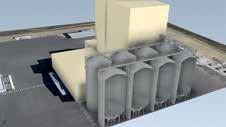
2015 Simeza was purchased by the German company Petkus Engineering who invested in the steel silo business as the silos are significant components of their industrial and agricultural plants, and with the clear target to introduce the former family company into the international market.

The market is the benchmark of the investor, and the market of the steel silos is always moving to higher technical specification, to bigger dimension, to more reliable performances, to shorter delivery time, to extreme flexibility of the product.
In order to comply with the market requirements, Simeza planed a serial of individual innovative investments on either front of its activity which we are pleased to introduce as follows:
New Design:
• The roof of the silos is the most delicate and sensitive component of the structure of a silo, both from the static point and the corrosion of view.

• The roof was completely redesigned in the main component in order to prevent any welding operation, to allow only bolted assembly, to limit the tolerance, to increase the loading capacity, and to allow any
potential finishing.
• The range of alternative solution was extended and is now including the std assembly, the double skin insulated assembly, the fumigation assembly, the color customized shape, the fully stainlesssteel bolting
New Static:
A new static was worked out according to the new design of the roof, by 3D FEM method for all different snow and wind loads, and now a wide data base is available in order to be ready to react in real time to each individual different enquire.
The size and the lay out of the supporting beams of the roof was optimized in order to be adequate for all different snow and wind loads and also to allow easy packing, transport, and assembly also for big size silos.
A new concept of static of the silos under seismic loads was worked out in order to be comply with the significant increase of the seismic coefficient required in many countries.
New Product:

The specification of the storage phase of cereals, oil seed, and paddy/rice in steel silos become every day more sophisticated in order to comply with the specification of the international trading, transport, or later processing of the same, and the silos must be equipped with dedicated additional devices accordingly.
Simeza worked out the industrial design of several accessories of the storage silo which
36 | November -December 2022
IN THE SPOTLIGHT

were previously required only in special case, but are now coming usual for many plants, in order be manufactured by automatic lines inside the factory such as:
• various alternative solution of aeration system

• alternative structural and architectural solution of hopper silos
• alternative solution for grain ladder
• much bigger dimension/capacity of hopper silos

• various alternative solution of conveyor bridge and stair, complying with the new static and work safety norms of different countries .
New Clients
• Out of the national market, Simeza is oriented to the investors in large grain terminal required by the international trading
• Grain terminal to be either internal or port terminal, and dedicated to the export and import activities
• The scope and the operation of these terminal and the experience of these investors are requiring silos with much heavier specification than for agricultural plants, and size and lay out concept which allows high performances, high reliability, and easy operation of the plant
• The investors on this front are the new clients for Simeza, and the new property of the company is investing since years in new and additional sales and technical staff in order to satisfy same clients. Simeza already succeeds to get significant order on this front in several countries, such as Eastern Europe, North Africa, Middle East
New manufacturing lines:
• In order to implement the above-mentioned
strategy, Simeza performed huge investment in the manufacturing lines, for example:
• Upgrading of the profiling line for corrugated sheet and vertical stiffener of the silos in terms of profiling speed, thickness and tensile of the steel, full automatic operation and control of the dimension of each individual item
• Installation of a new continuous decoiling and cutting line allowing the company to procure all steel only in coil with same zinc finishing and steel quality for all components
• Installation of a full automatic punching and cutting line for bended components coupled and integrated with a robotized bending line

• Full automation of the punching and cutting line for roof panels, integrated with robotized bending line
• The factory is now equipped to manufacture up to 1.500 t of steel components of silo per month
New Factory:
• In order to get the benefit of abovementioned investment the factory was basically doubled by integration of a 3rd adjacent shed
• The rehabilitation and extension of the office is in progress
New Packing And Logistic:
• In order to comply with potential longer storage time of the supplied goods at site before the installation, and to prevent the risk of potential damage of the finishing, the packing method is realized by thin steel sheet without paper or plastic for each individual pallet.
• In order to comply with the shipment by both truck or container the packing concept is revised by using smaller weight and dimension of the individual pallet, allowing loading and unloading operation by front loader or crane.
• For easier loading of containers, the factory is equipped with 2 hydraulic platforms, and for quick loading of trucks the factory is equipped with 2 independent shipping hall, and the company can load simultaneously up to 2 trucks and 2 containers
New ERP
• Simeza has invested a lot of money and efforts in improving the ERP managing system of the company.
• The new system is already in operation for the sales, administration, and technical department, and is in advanced progress of installation for the control of the individual manufacturing cost, of the material stock, and for the continuous control of the manufacture.
• The system requires continuous upgrading and improvement and to this extent the ERP department includes staff of 3 dedicated engineers.
FEATURE 38 | November -December 2022
SheVax project boosts vaccine uptake among women livestock holders in Kenya, Uganda and Rwanda
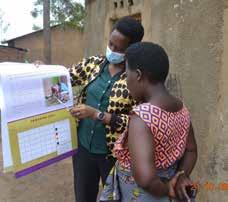
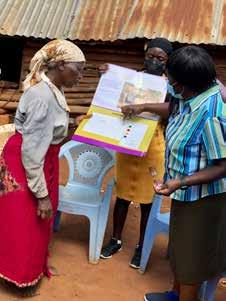

Each year, millions of women livestock holders face financial and animal losses when diseases sweep through their farms. Yet, these infections are often highly preventable with a simple vaccination. A new programme is encouraging greater vaccination uptake among East African women by ensuring timely and cost-effective access to these life-saving solutions.
Worldwide, over 750 million people keep livestock as a source of income, 400 million of whom are women. However, animal diseases – such as Newcastle disease in chickens and peste des petits ruminants (PPR) in goats – create widespread devastation. Women are disproportionately affected because they are less likely than men to be able to access the vaccines which prevent such losses.
A lack of access to adequate information by women on vaccinations, animal health, and livestock management, coupled with a lack of cold chain vaccine storage in East African rural areas, have complicated matters. A significant shortage of animal health service providers (AHSPs) is an added challenge. In Machakos, Kenya, for example, there is only one AHSP for 30,000 households; ideally, there would be one for every 3,000 households.
Currently, there is limited research on the different roles that women and men have in livestock vaccine systems, and on the factors that affect their ability to participate in and benefit from them. To address these barriers faced by women in East Africa, and generate new evidence on how they can better benefit and participate in these systems, SheVax+ – a regional livestock vaccine initiative – was launched in 2019, with support from the International Development Research Centre, Global Affairs Canada, and the Bill & Melinda Gates Foundation through the Livestock Vaccine Innovation Fund.
The project is enhancing the number of women AHSPs, training and equipping them with livestock drugs and vaccines, creating a local source of vaccines through the introduction of solar-based refrigerators, and enhancing women’s access to livestock vaccines. This, in turn, increases vaccination demand and closes the gender gap.
Promising signs of success
“Currently, 24 women have been trained across three countries to provide vaccination
Over 1,200 vaccination calendars have been distributed across East Africa. Photo credits: SheVax+ Project and animal health-related services to 140,000 farming households. This equates to one AHSP for every 6,000 farming households, a fivefold improvement on the previous ratio,” said Hellen Amuguni from the Cummings School of Veterinary Medicine at Tufts University and the Principal Investigator for SheVax+.
The project creates entrepreneurial opportunities for women by providing them with a valuable
source of income and the capability to move into vaccine distribution and manufacturing. Across Kenya, Rwanda, and Uganda, women AHSPs make US$50-300 per month – with the amount dependent on the country’s economy and labour rates. To put this into context, Amuguni said, “a Rwandan family of four needs US$25 to purchase health insurance for an entire year.”
In light of non-existent or unreliable electricity sources, the organisation is also rolling-out solar-powered fridges. So far, they’ve installed 30 across Kenya, Rwanda, and Uganda. “Solar is climate-resilient, environmentally-friendly, reliable, and accessible to all,” Amuguni stated.
SheVax+ and its partners also provide women with information on where to access vaccines and veterinary services. This is being achieved through tools such as vaccination calendars, with over 1,200 having been distributed in English, Swahili, and Kinyarwanda, educational comic books in English and Kinyarwanda, and animated videos.
To change beliefs and behaviours affecting women’s decision-making regarding vaccine use, access to training, and livestock ownership, men are also being educated. So far, 40 male ‘role models’ have been selected to help raise awareness around cultural and traditional stereotypes and advocate for women’s roles in livestock vaccination.
Higher-level engagement is crucial if lasting change is to occur, so meetings have been held with stakeholders, such as regional government officials and vaccine producers. In holding discussions with senior actors around the challenges affecting women’s access to vaccinations and what can be done to overcome them, the hope is that policies and frameworks will be implemented to support women’s
FEATURE November -December 2022 | 39
Sona Machinery showcases as the market leader in Rice and Grain Milling Plant Solutions at the Alco Tech Expo 2022

a collaborative experience for all participants who witnessed the presentations and discussions around the changing industry aspects.
Sona Machinery specializes in complete rice mill turnkey setup with a tonnage between 3TPH and 10TPH. It also manufactures rotary drum cleaners, acentric pre-cleaners, fine cleaners, vibro screen cleaners, stone separators, material handling equipment (such as bucket elevators and chain & belt conveyors), dust collection equipment (such as centrifugal blowers and cyclone separators), and flour silos.
Sona Machinery, the leading manufacturers of Agri-machinery equipments, showcased its cutting-edge technology products for turnkey Rice and Grain Milling & Processing plants at the Alco Tech Expo 2022. The event which was organized on 18th November at Hotel The Regnant, Nirala Nagar, Lucknow, witnessed over 250 visitors discussing on the important issues around the fastest-growing Indian alcoholic beverage marketplace and the impact of E20 policy on the set up of new distilleries.
India has one of the fastest-growing alcoholic beverage marketplaces in the world, with a market value estimated at USD 52.5 billion. Another rapidly growing sector is the space for ethanol production wherein the products produced by Sona Machinery contribute significantly to the ethanol extraction, thereby contributing and aligning with the government’s planning for E20 policy for Ethanol Production.
While discussing on the Emerging Opportunities of Alcobev Manufacturing in Uttar Pradesh, Mr. Vasu Naren, Managing Director & CEO, Sona Machinery, said, “The upcoming times would be the golden years for the industry as the Government is planning E20 for Ethanol Production. Under E20 Policy, the government will increase the blending of ethanol in Petroleum from 10% to 20% by 2025, thus increasing the demand in new Distilleries set up. The event was a great opportunity to understand the upcoming trends in the alcohol and beverage industry in India, thereby helping us to prepare for the everevolving market. It offered the opportunity to meet industry experts and deliberate upon the challenges and scope of investment in the sector.”
The event comprised of a series of technical and non-technical sessions around alcohol and beverage sector, and grain-based distilleries and milling industry along with its future scope. It was


It also specializes in manufacturing grain milling machines for grain-based ethanol distilleries with a capacity between 30 kiloliters per day to large plant set-ups, grain pre-cleaners and material handling equipment with tonnage between 3TPH and 125TPH. With the vast range of products offered, Sona Machinery shared its technological prowess with the industry experts at the Alco Tech Expo 2022, it helped the brand to propagate its farsighted vision and services offered.
About Sona Machinery
Sona Machinery, established in 1995 (erstwhile Sona Foods India) has been at the helm of the industry since the advent of mechanization in Agriculture supporting it with its smart technology solutions with a mission is to develop & deliver world-class cutting edge technology products to our customers.
Today, under the leadership of 2nd generation Serial Entrepreneur & VC - Mr Vasu Naren as its Managing Director & CEO, Sona Machinery is an ISO 9001:2015 Certified Company with 27+ years of experience under its belt and having a sprawling 10000 sq. mts. facility with over 400+ skilled professionals delivering customized solutions to its more than 10000+ satisfied customers across continents. Our product list includes (but is not limited to) a complete range of cutting-edge technology equipments for Turnkey Rice Mill Setups as well as for cleaning, processing Pulses, Wheat, Sesame, Millet, Gram, Lentils, Maize, Corn, Barley as well as Seeds & Post-Harvest Agricultural Equipments in all desired capacities. We also cater to our customers who are engaged in Grain Milling (Grain Based Distilleries & their EPC), by providing them turn-key plant set-up solutions through our subsidiary Can Engineering Solutions. Our list of customers includes Large Enterprises, Central & State Government PSU’s, Retail Customers and Farmers who are spread across India as well as Globally.
FEATURE 40 | November -December 2022
The Irrigation Show brings you the tools you need to improve your ag operation and make new connections. Join the Irrigation Association in lively Las Vegas, Nevada, Dec. 5-9, to be part of the largest trade show dedicated to irrigation.

• Meet leading ag irrigation companies, including tech startups looking to share their unique innovations with the industry.



• See the latest innovations in ag irrigation during the new product contest.


• Connect with industry experts who can answer your most pressing questions on ag irrigation.

• Enjoy our Craft Brewfest and explore all that Las Vegas has to offer.

Expand your ag irrigation knowledge. Explore unique solutions and new products.
Use promo
FRA22 for a FREE registration to the show! Register now at www.irrigationshow.org to experience everything we have to offer at the
Show and Education Week! The Groundwater NGWA Association SM December
2022 | Trade Show |
Las
Convention Center | Las
code
2022 Irrigation
5-9,
Dec. 7-8
Vegas
Vegas, Nevada
From backyard farming to commercial farming
farm to get practical training and work experience which they need to graduate.
Meeting food safety and hygiene standards
The risk of farm produce encountering contamination from farm to shelves is high and farmers are responsible for ensuring that their produce does not get infected. It’s important that farmers comply with food and safety standards as this prevents food poisoning. Farmers often overlook the importance of complying and getting audited. “My farm complies with the perishable products standards act of 1990 and because of this, we only use registered agrochemical sprays on our produce,” he said.
Benica Projects was certified by Good Agricultural Practices (GAP) which is a voluntary certification program which does verification through an audit that checks that sound food safety practices are being used. This helps the farm comply and reduce the risk of contaminating produce that will be consumed.
Overcoming challenges
By: Fundiswa Nkwanyana
Most South African homes have a small food garden in their backyard and many entrepreneurs are finding business opportunities from this. One such entrepreneur is Bennedicter Mhlongo, a commercial farmer in Mpumalanga that started a farming business in his backyard.
Getting started
Farming is a lucrative business venture that contributes positively towards food security, job creation and economic growth. Mhlongo’s passion to become a farmer started when he was growing vegetables in his backyard.


His community members were in awe of his flourishing food garden and started buying from him. “When I realized that farming could be a profitable business venture, I resigned from my job as a nurse and focused on farming, “he said. In 2013, he started a farming business called Benica Projects where he grows tomatoes, peppers, green chilies, cabbage, and spinach. Transitioning from a small backyard farm to 10 hectares of land was not easy. “I struggled to find land to work on because it was during the time when land ownership debates were heated and I had to ensure I get permission from the rightful owner,” he said.
When Mhlongo finally purchased land, he started off by fencing it to restrict trespassers, conducting in-depth research on which crops to grow and hiring staff. A key lesson he learnt was that it’s important to hire energetic staff because farming is a labour-intensive sector.
A farm needs water to thrive and sourcing water is a challenge that most farmers face. To ensure that his farm has a consistent supply of water, Mhlongo had to invest in a borehole.
Multiple income streams

Benica Projects has two local fruit and vegetable shops that sell their fresh produce to the public and resellers. By cutting off the middleman, they increases profits and reinvests in the business.
Another interesting way the farm makes money is through tourism. “We are in partnership with The Timbavati Foundation which has lodges that buy from us, and they also bring their guests to visit the farm,” he said. The exposure the farm gets from local and international tourists helps to advertise the farm and attracts new customers.
Benica Projects also has a student training partnership with the University of Mpumalanga, Tshwane University of Technology, and Ehlanzeni TVET College. Every year students come to the
Farming is challenging because there are elements that are beyond a farmer’s control and over the years Benica Projects had to deal with bad weather conditions, loadshedding and disease outbreak. “It’s been difficult because the war in Russia led to an increase in the cost of fertilizers and when there is loadshedding, I can’t run my irrigation system without electricity, “he said.
Despite these challenges the farm is growing and thriving because Mhlongo is resilient, innovative, and passionate about farming which helps him overcome challenges even when times get tough.
FEATURE 42 | November -December 2022
Nowadays there is a growing trend of thriving farming businesses that were started by entrepreneurs who fell in love with farming by growing crops in their backyard.



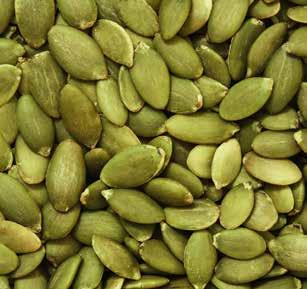


www.tomra.com/food
Transforming global food production to maximize food safety and minimize food loss by making sure Every Resource Counts.





















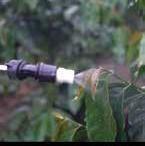
www.marketingarm.com BIOLOGICAL SYSTEMIC FUNGICIDE SYSTEMIC FUNGICIDE AND BACTERICIDE WITH DOUBLE ACTION. ADJUVANT SURFACTANT, PENETRATING, ANTIFOAMING, ADHERENT, NON-IONIC “ e ture ahead” green solutions for your crops

VARIABLE SPEED. CONSISTENT PERFORMANCE.
Vast range of variable speed engines for a variety of industrial applications from airport GPUs to irrigation.




Fast delivery and support wherever you are, thanks to our high production capacity and global service network.



Peace of mind with a best-in-class warranty 2 years / 2500 working hours.
Durable. Robust. Built To Last.






































































 By Marcelle Ayo, IFC Country Manager for Madagascar
By Marcelle Ayo, IFC Country Manager for Madagascar







































































